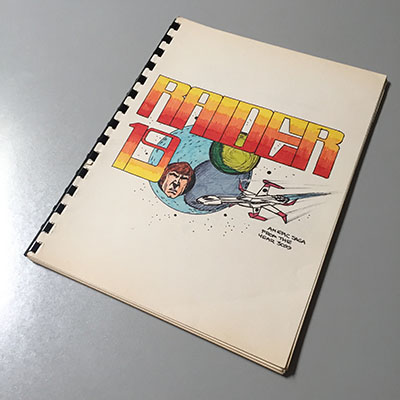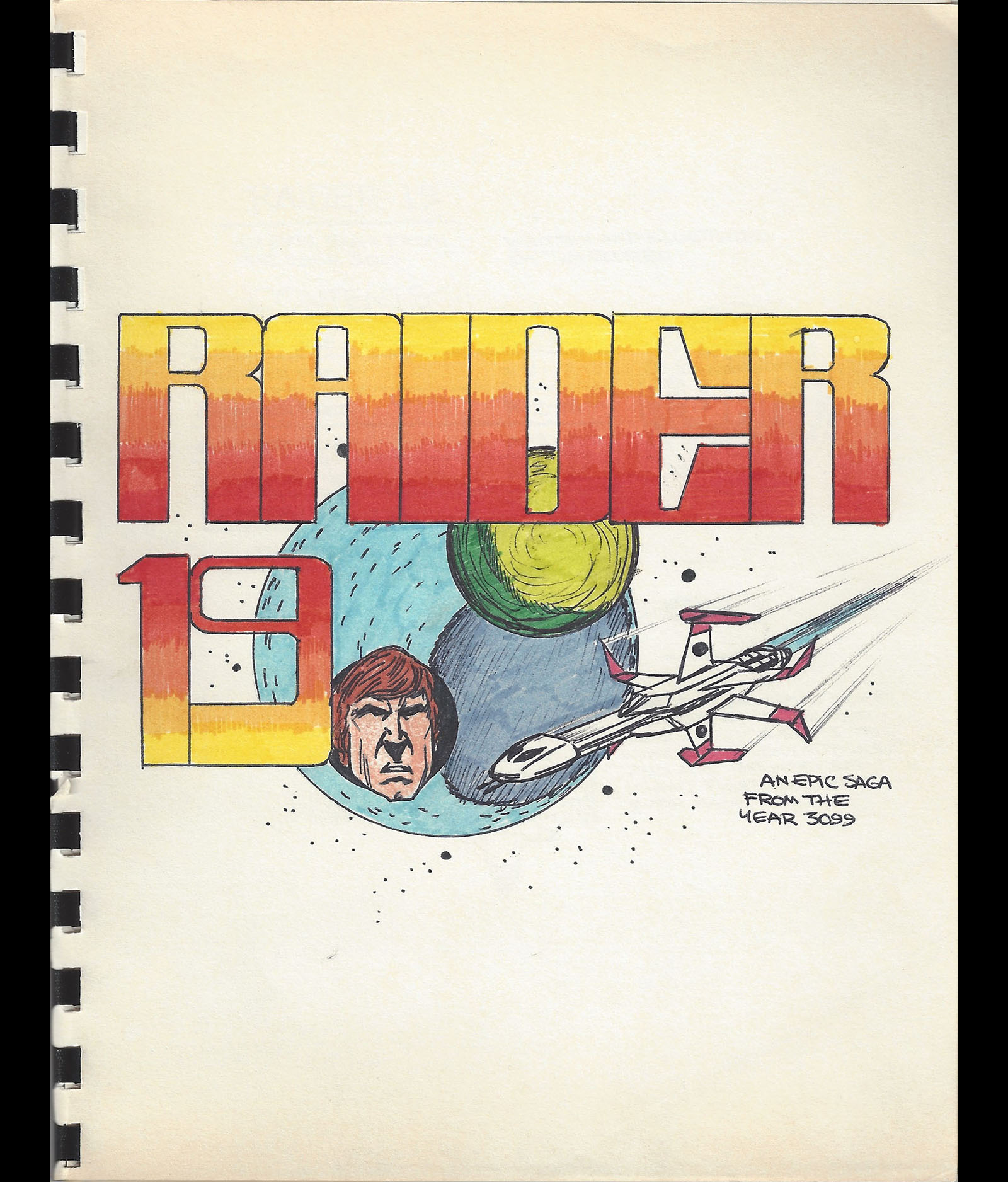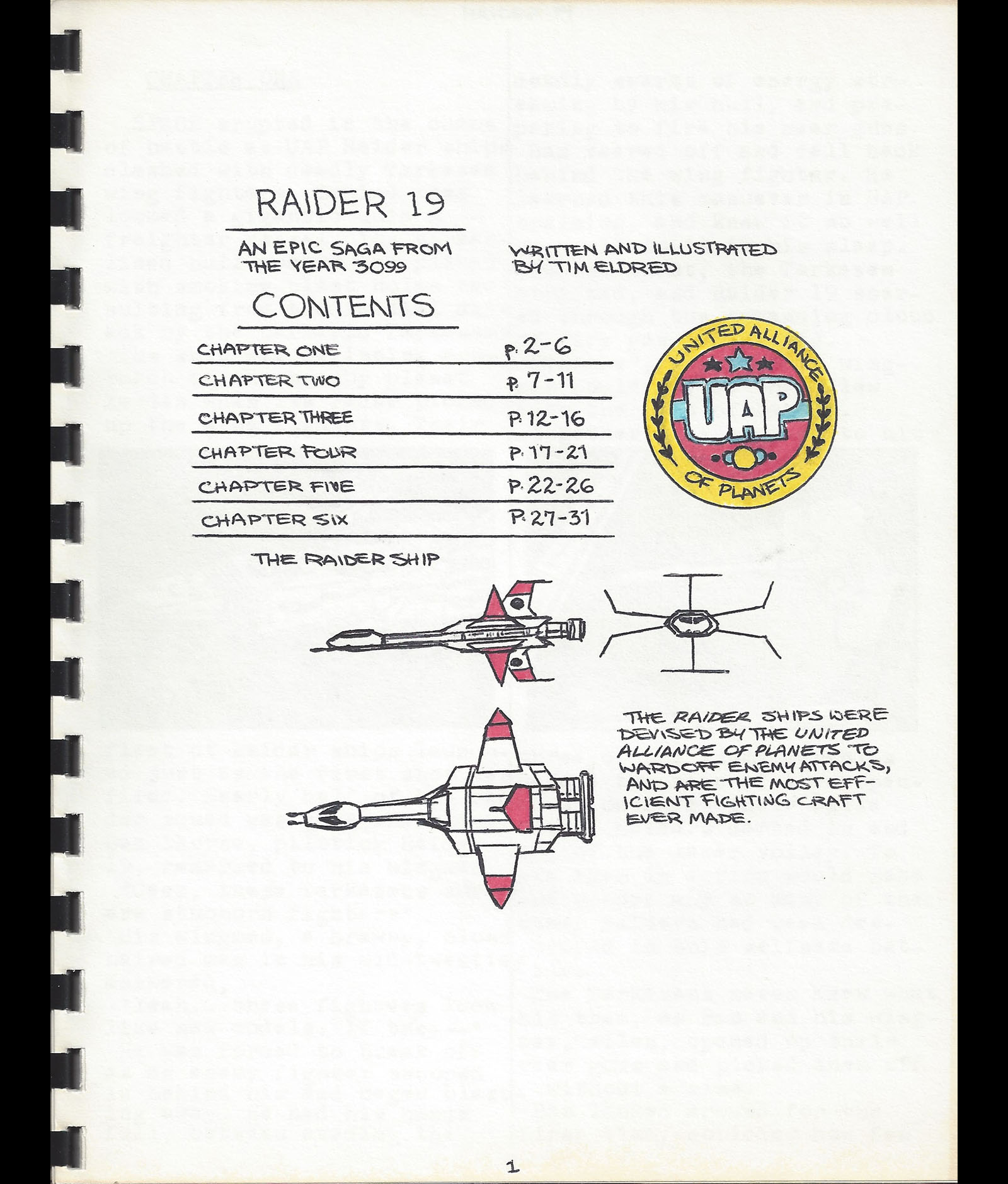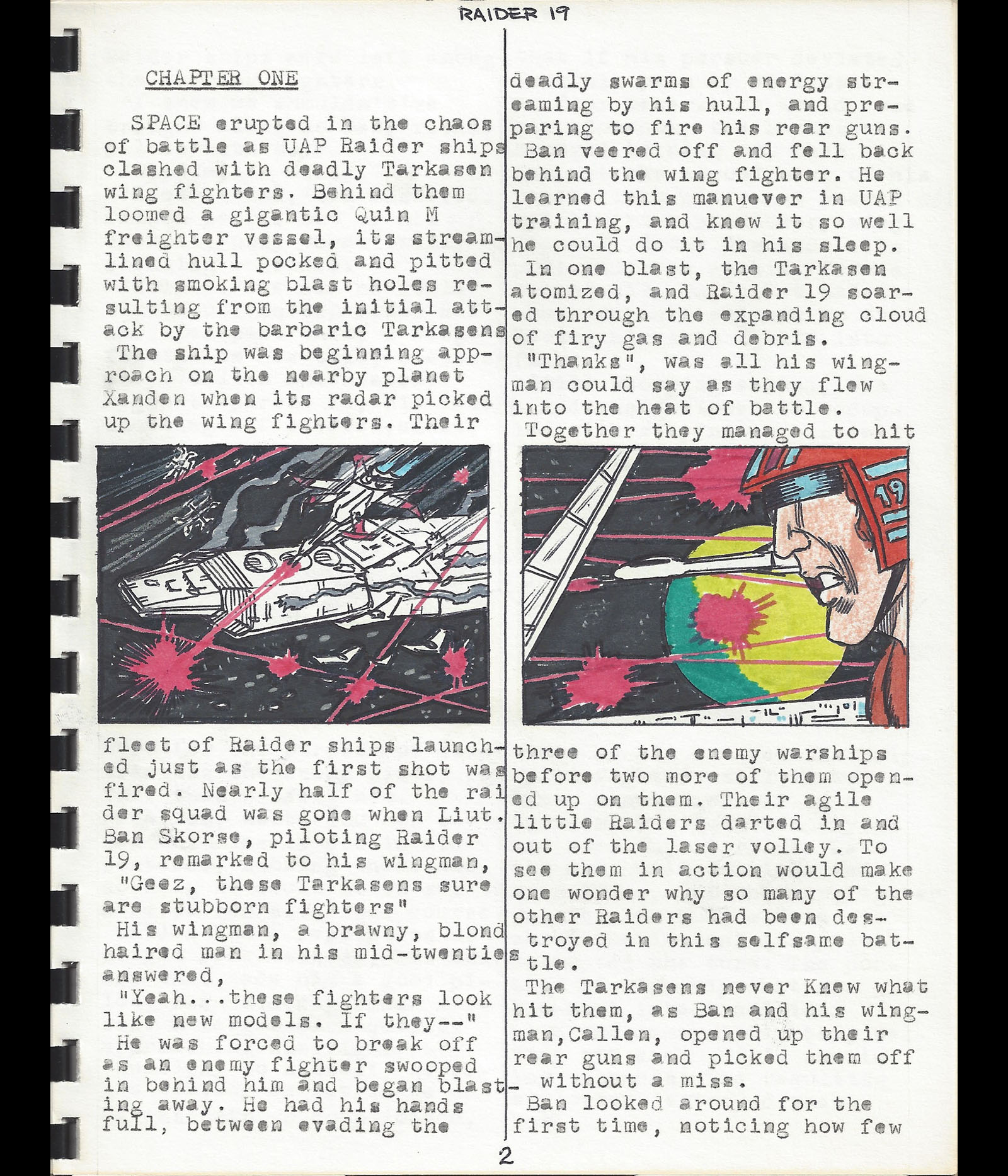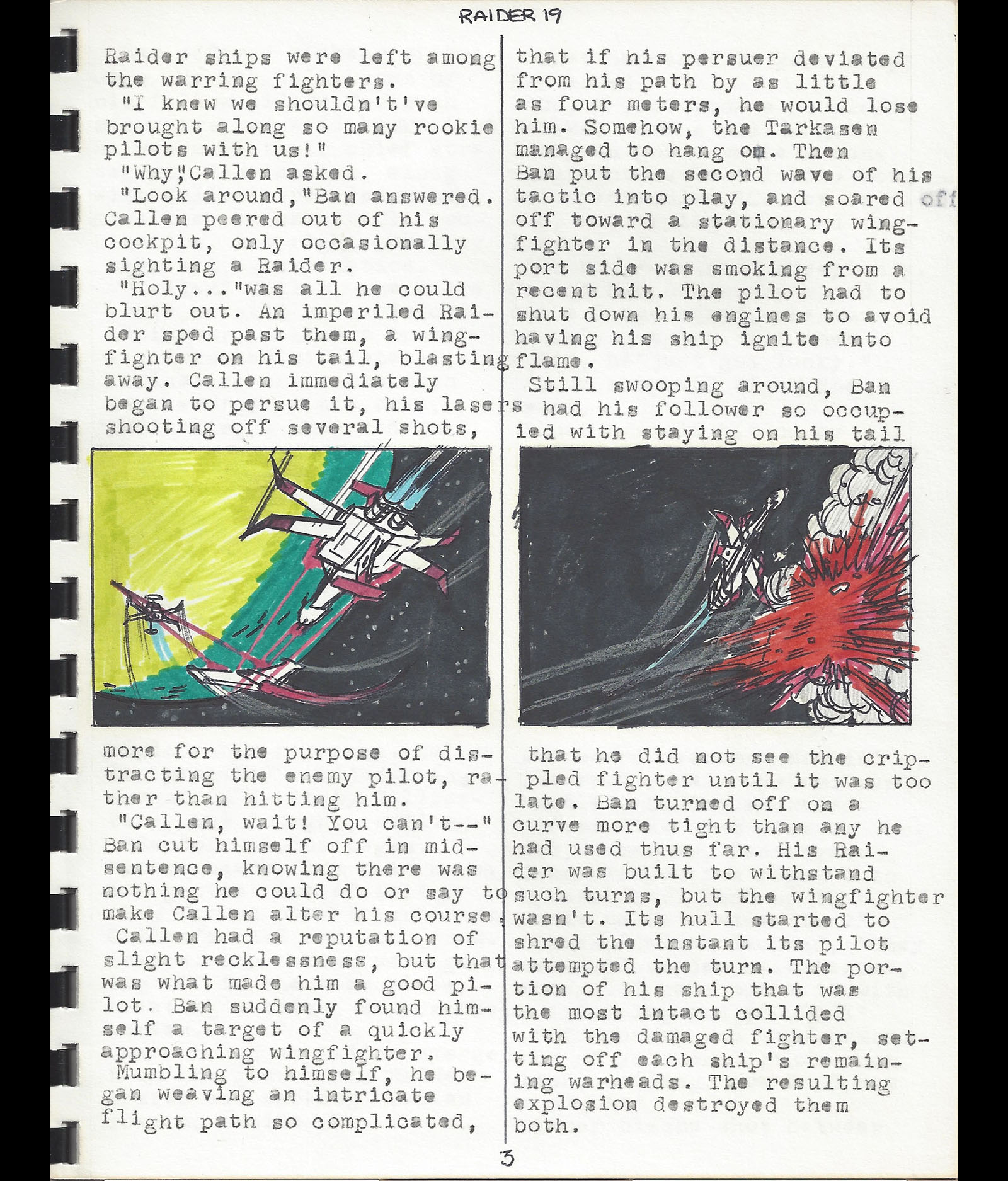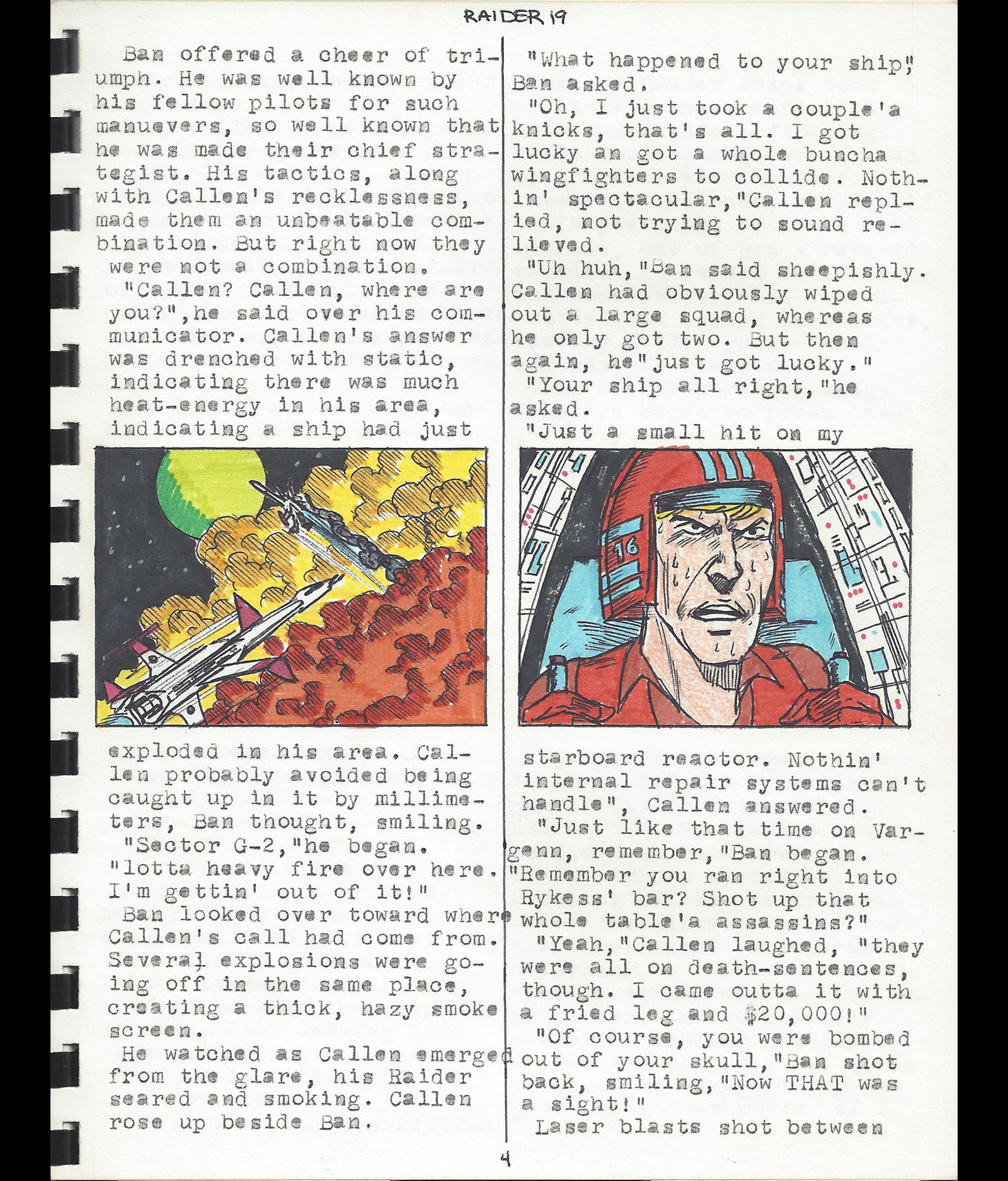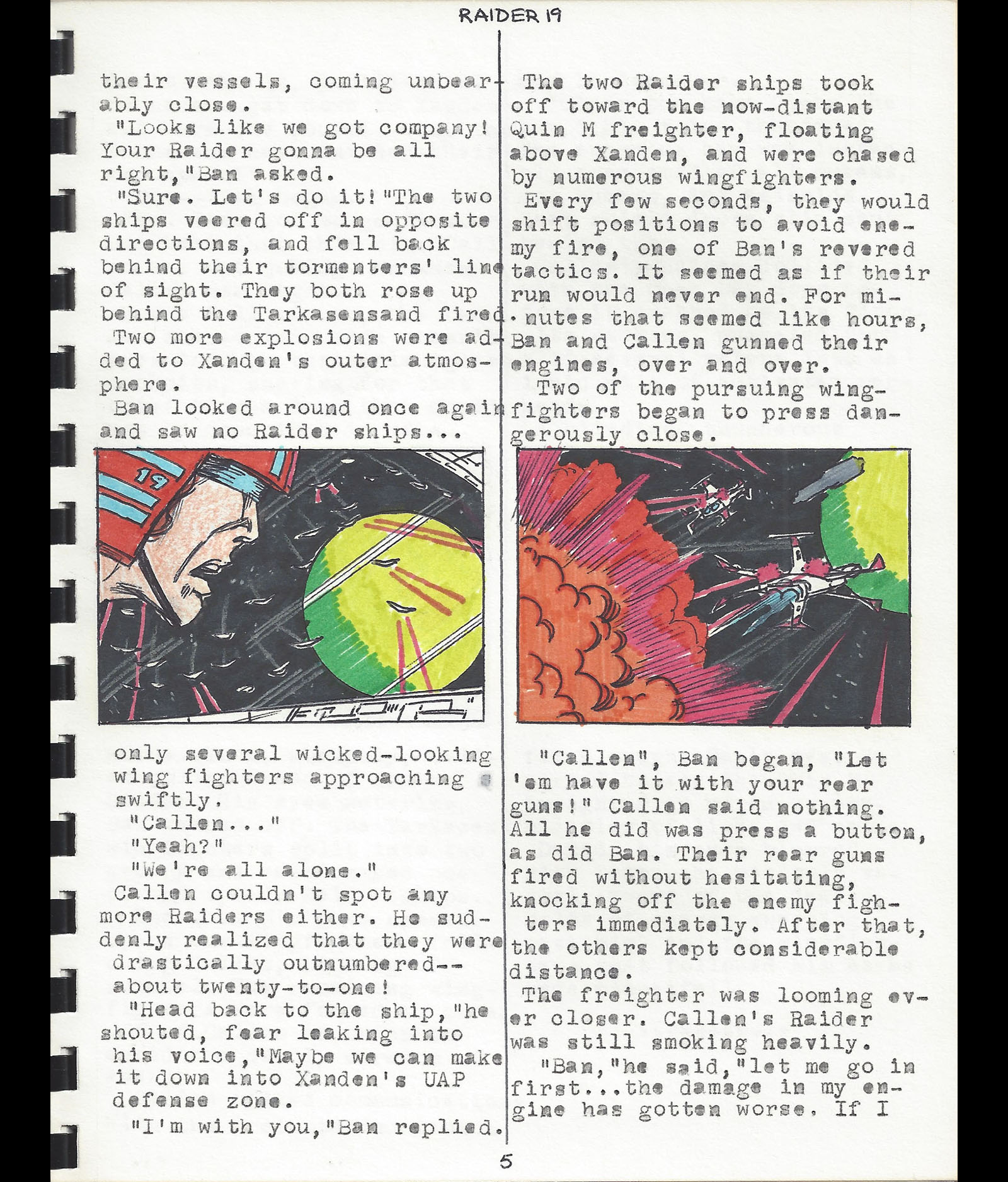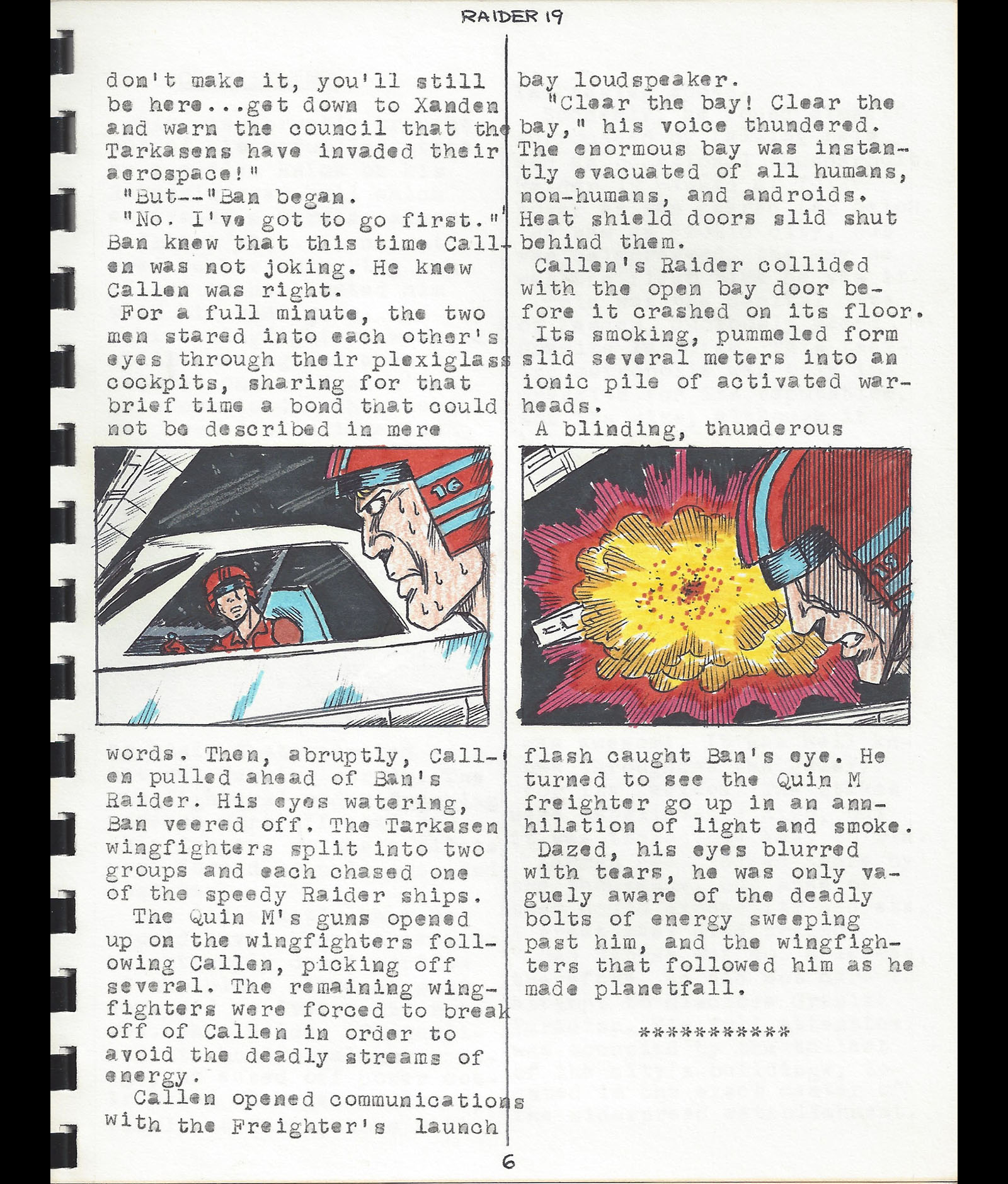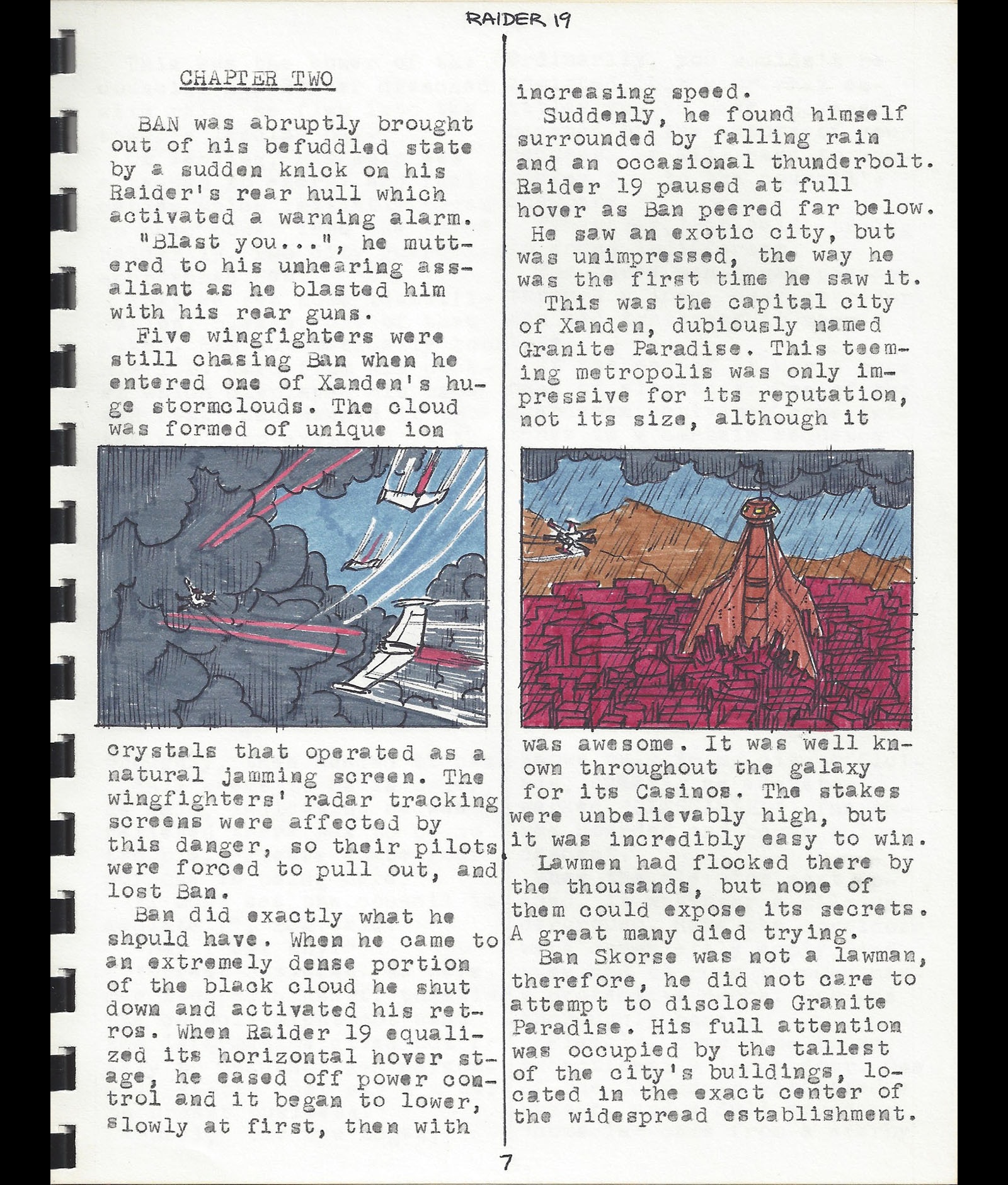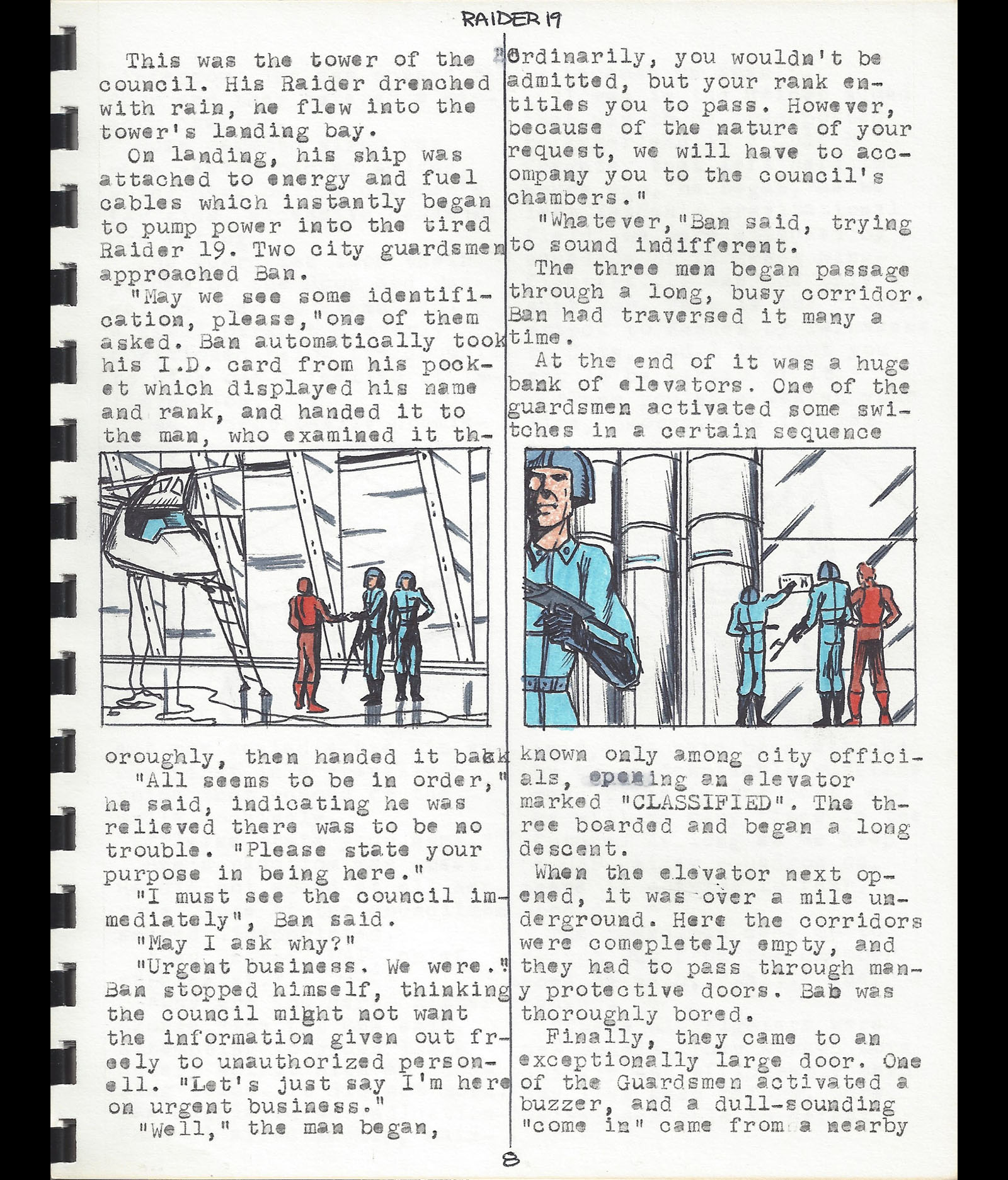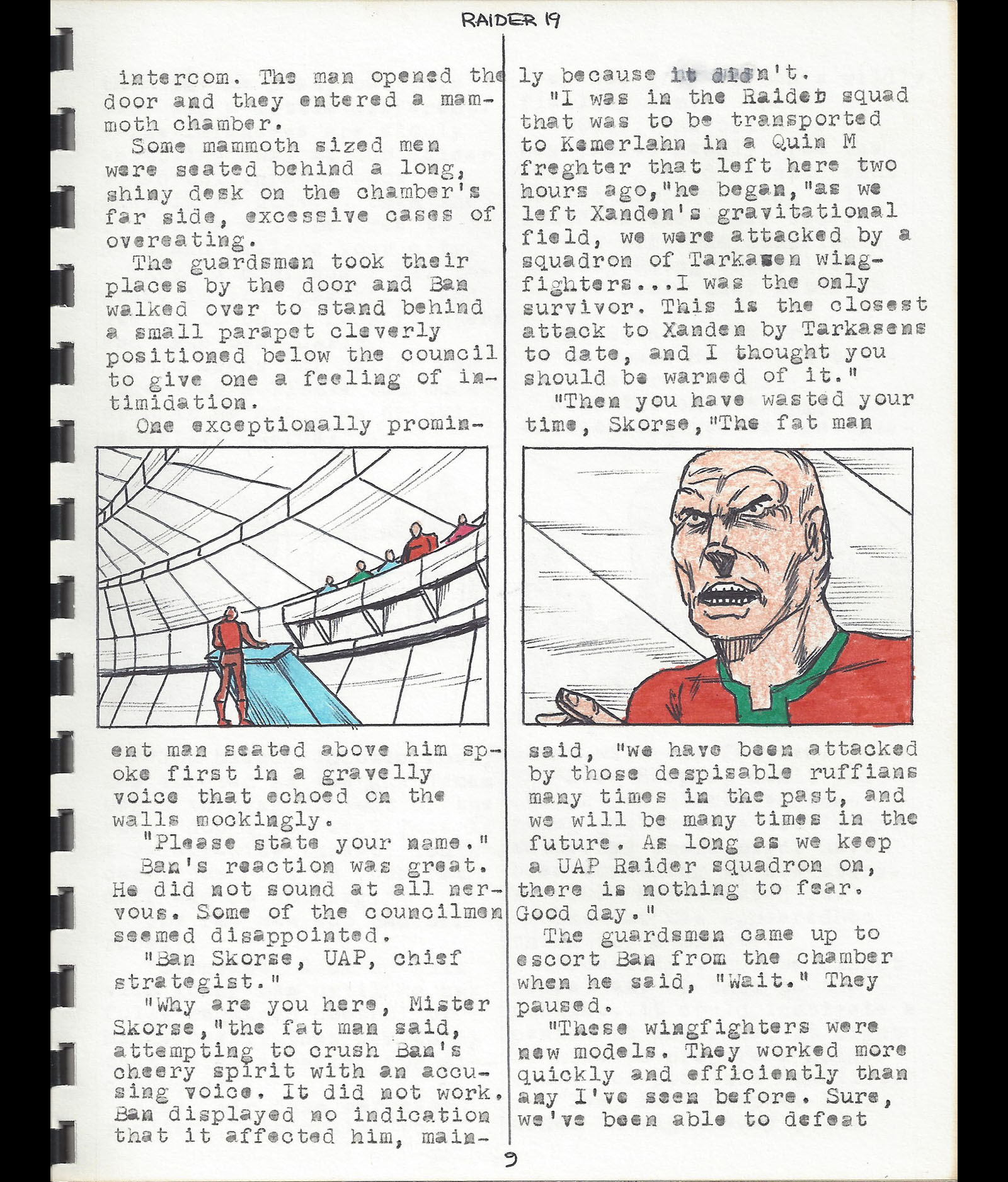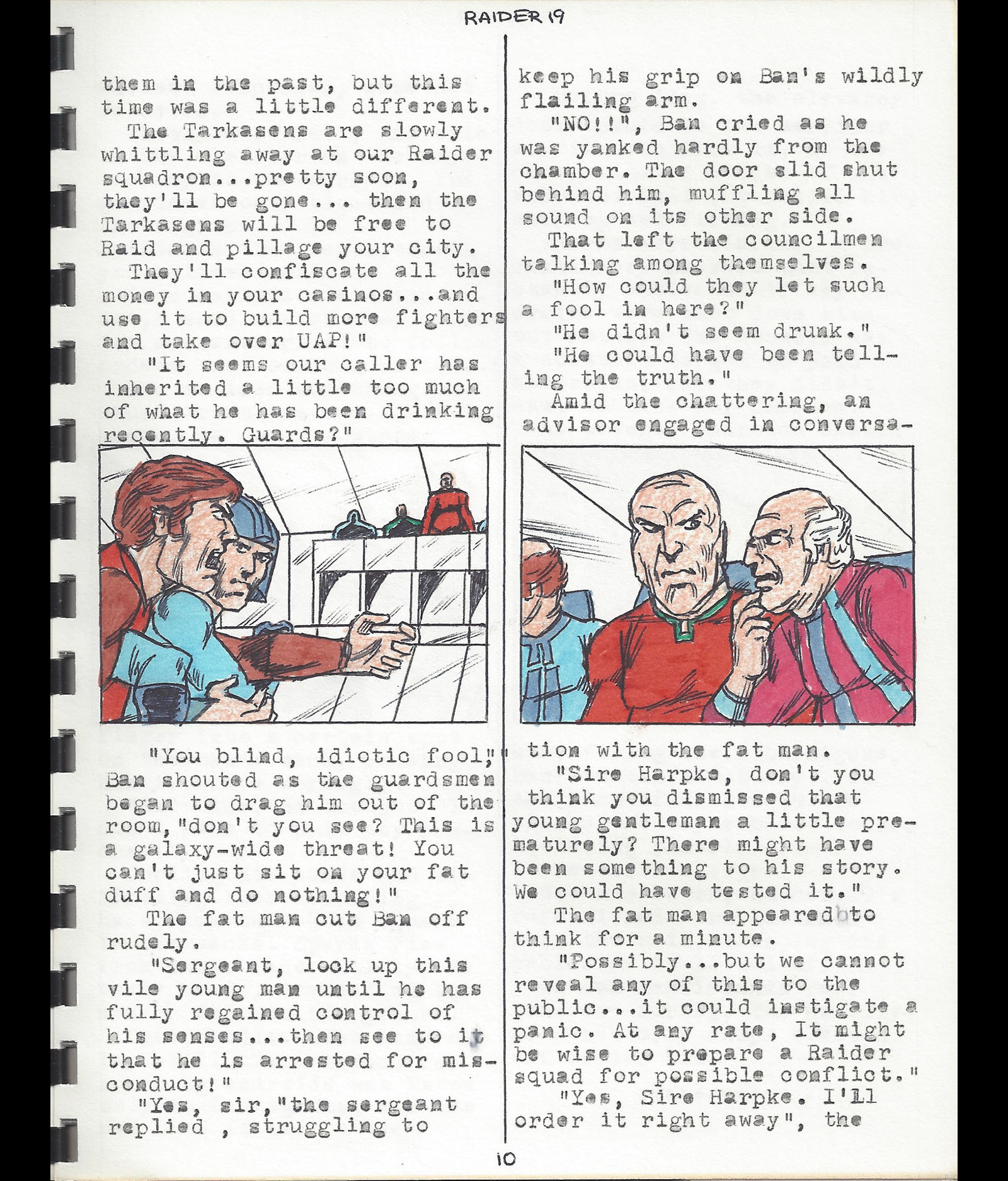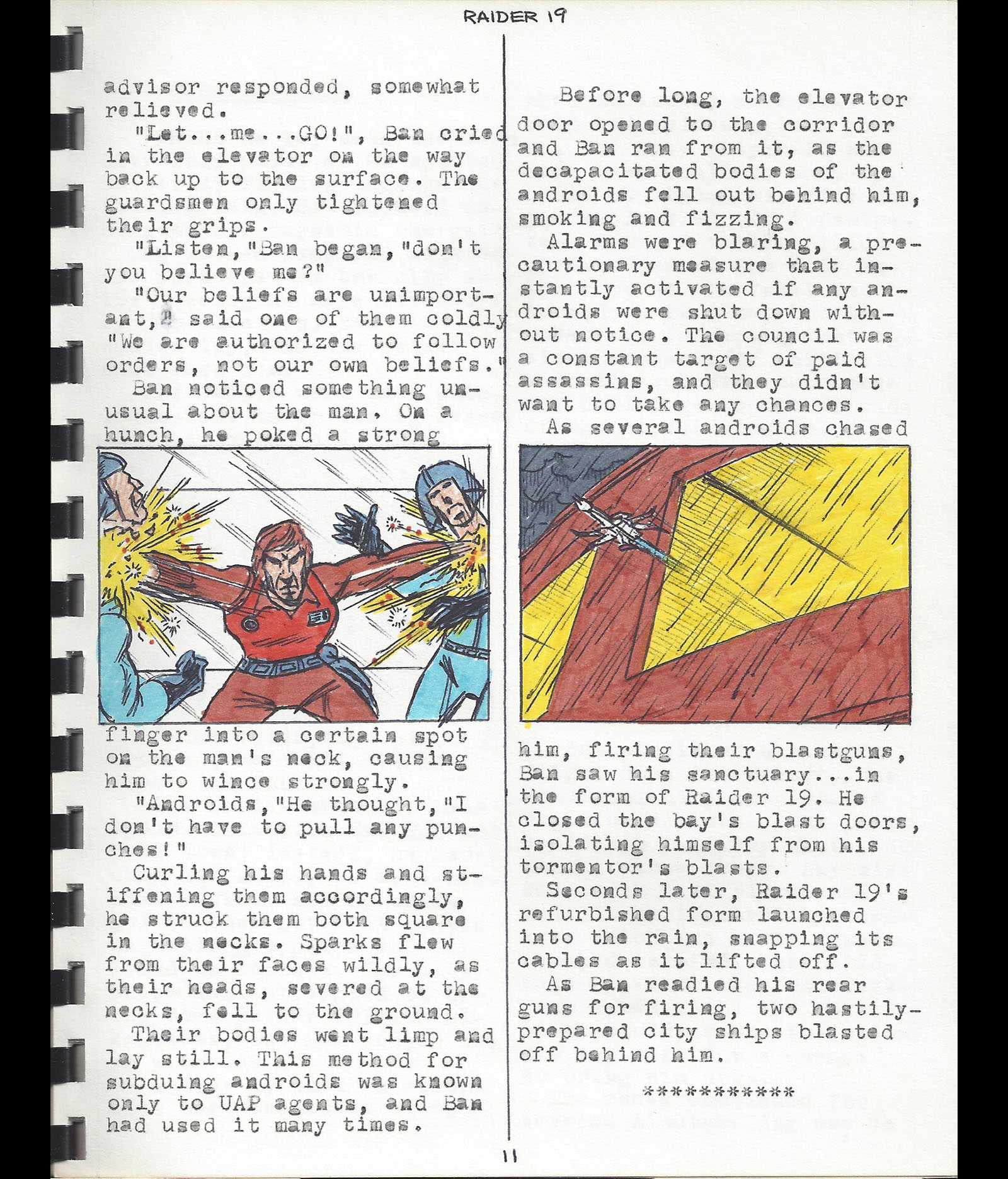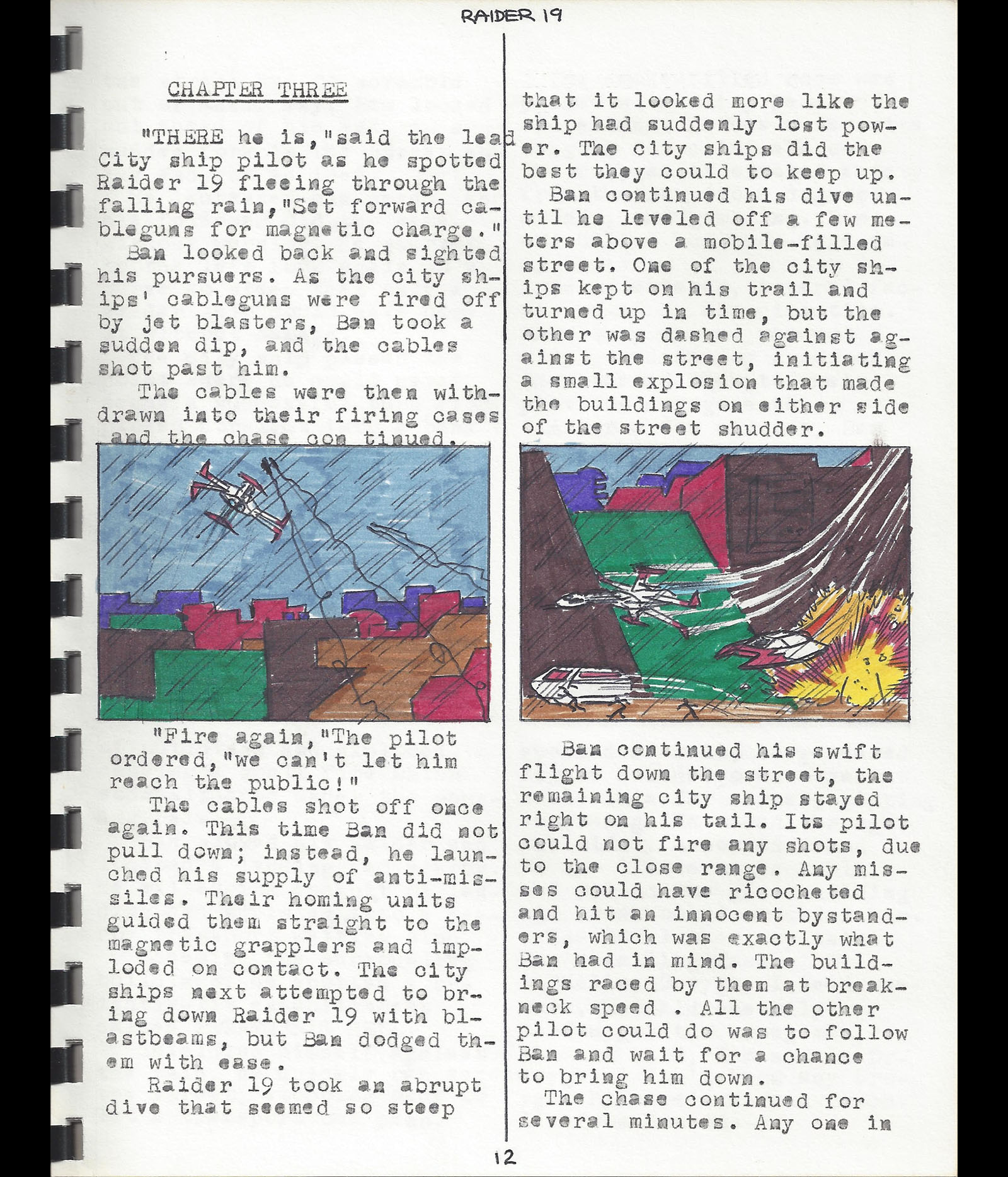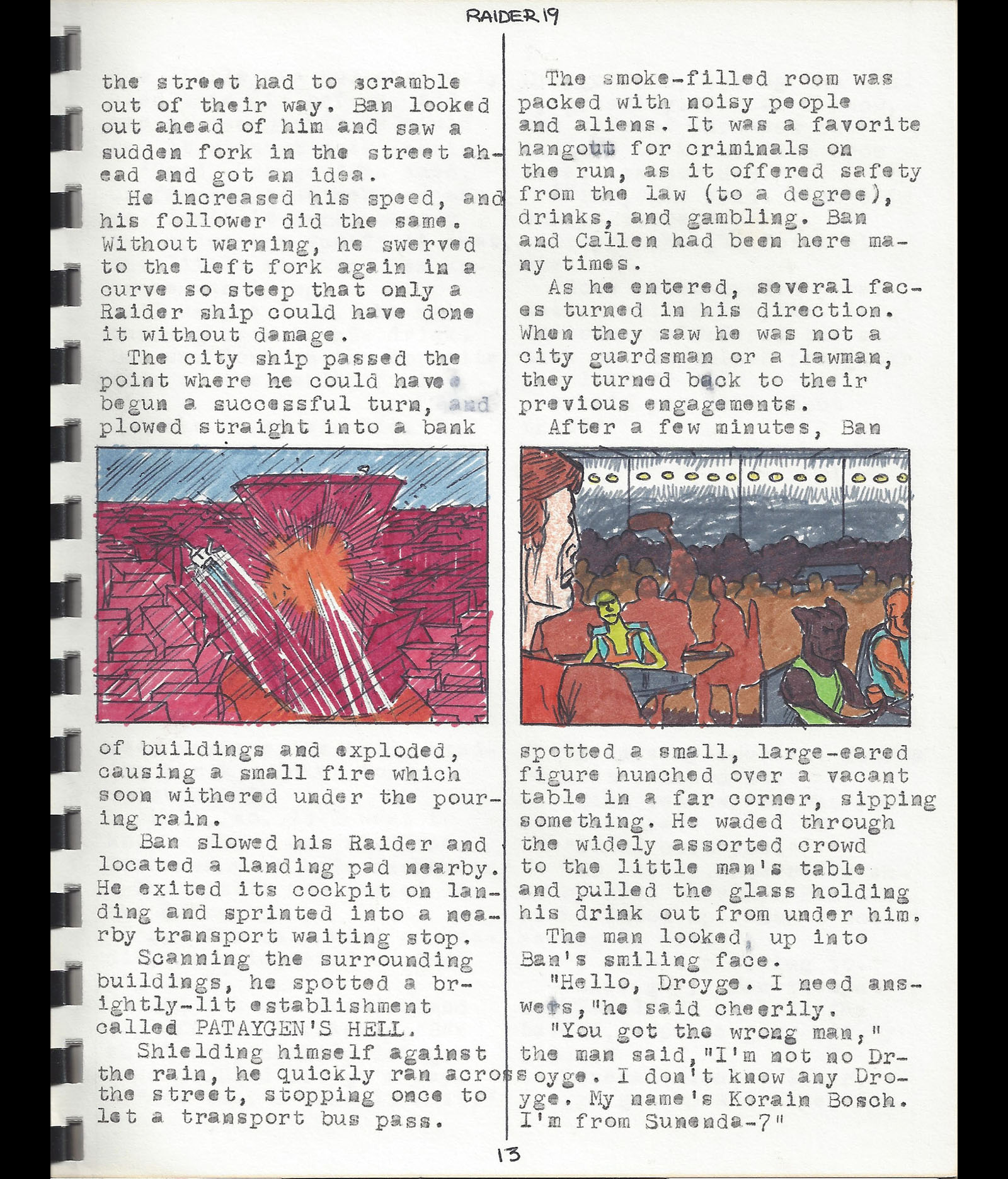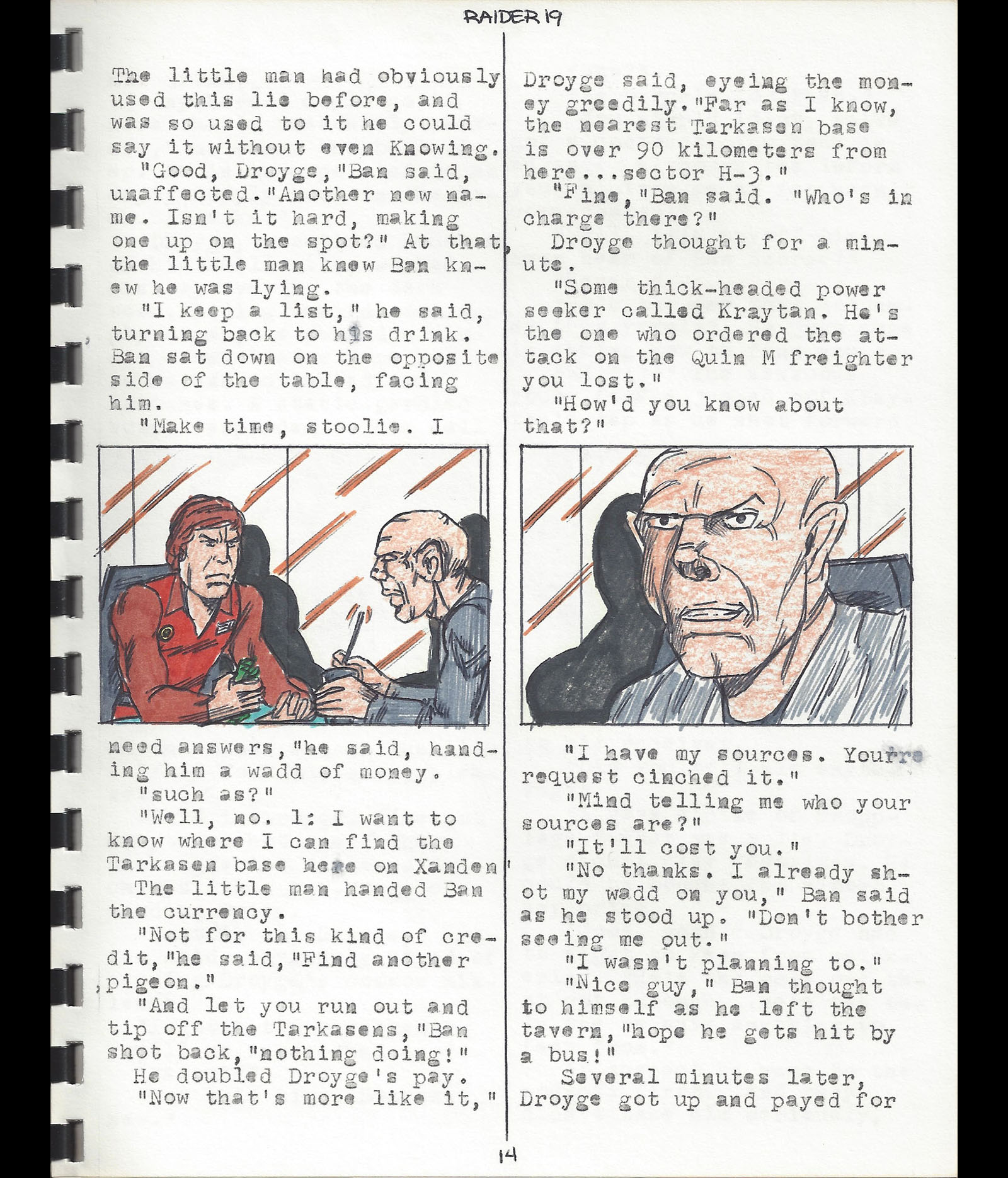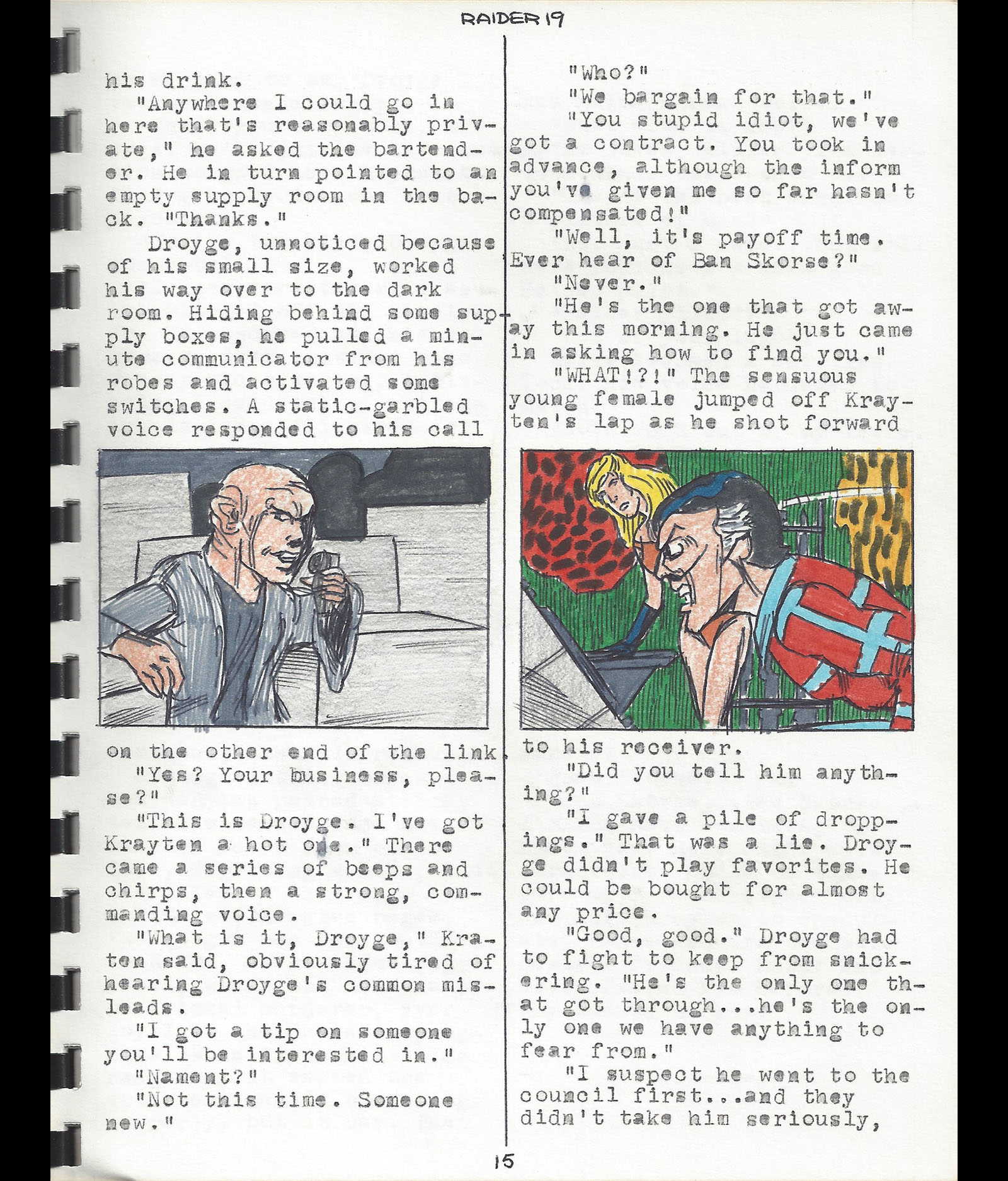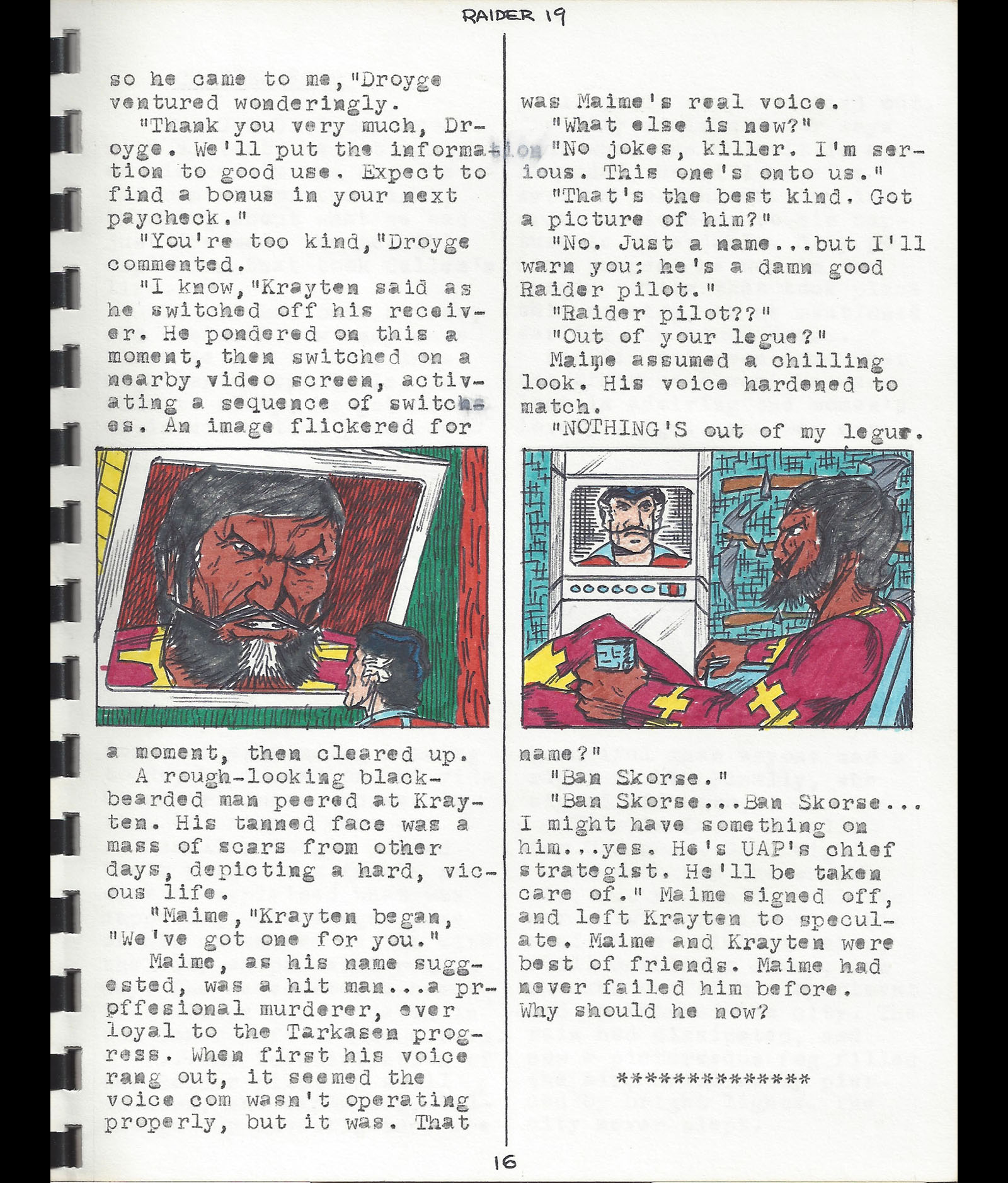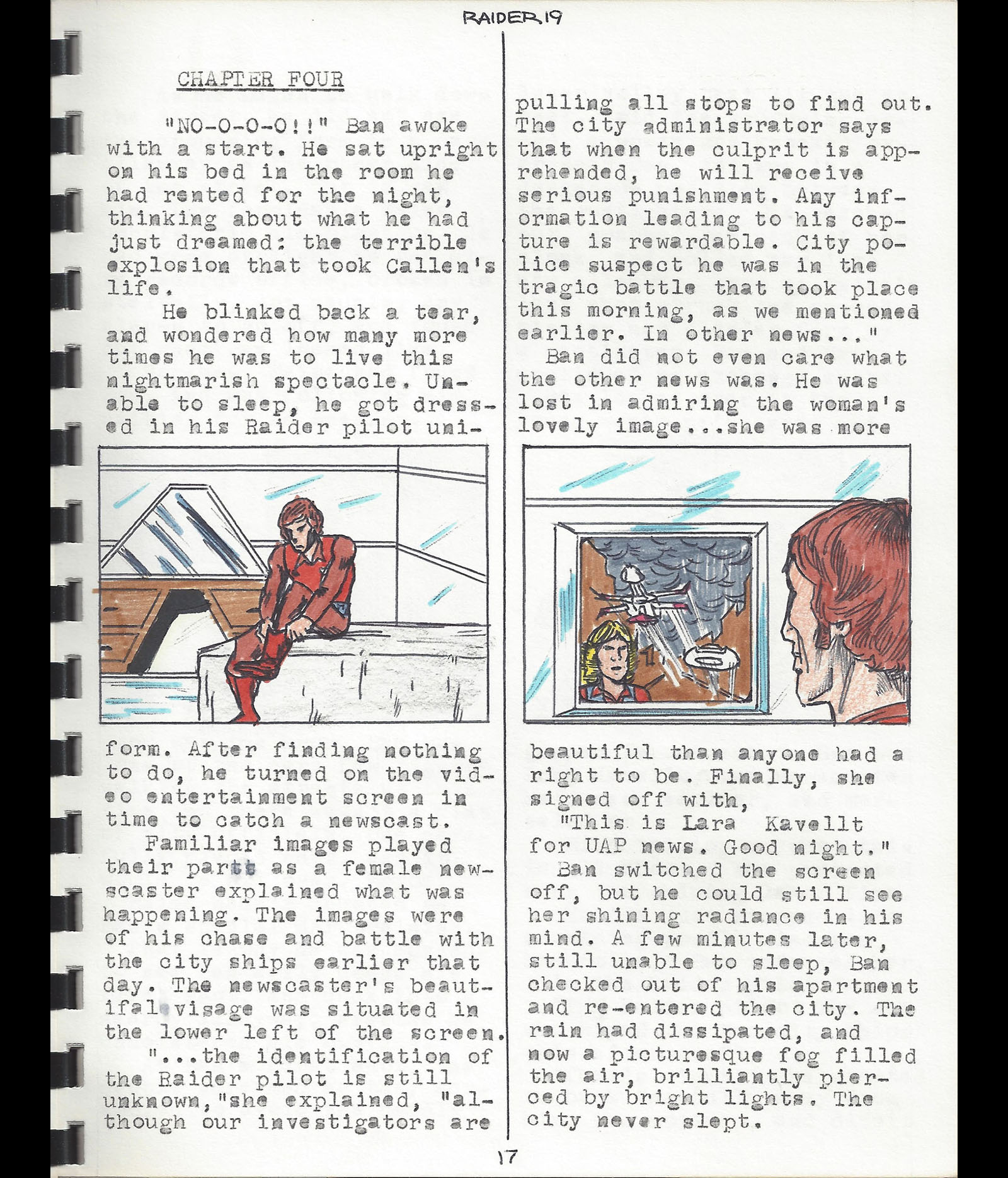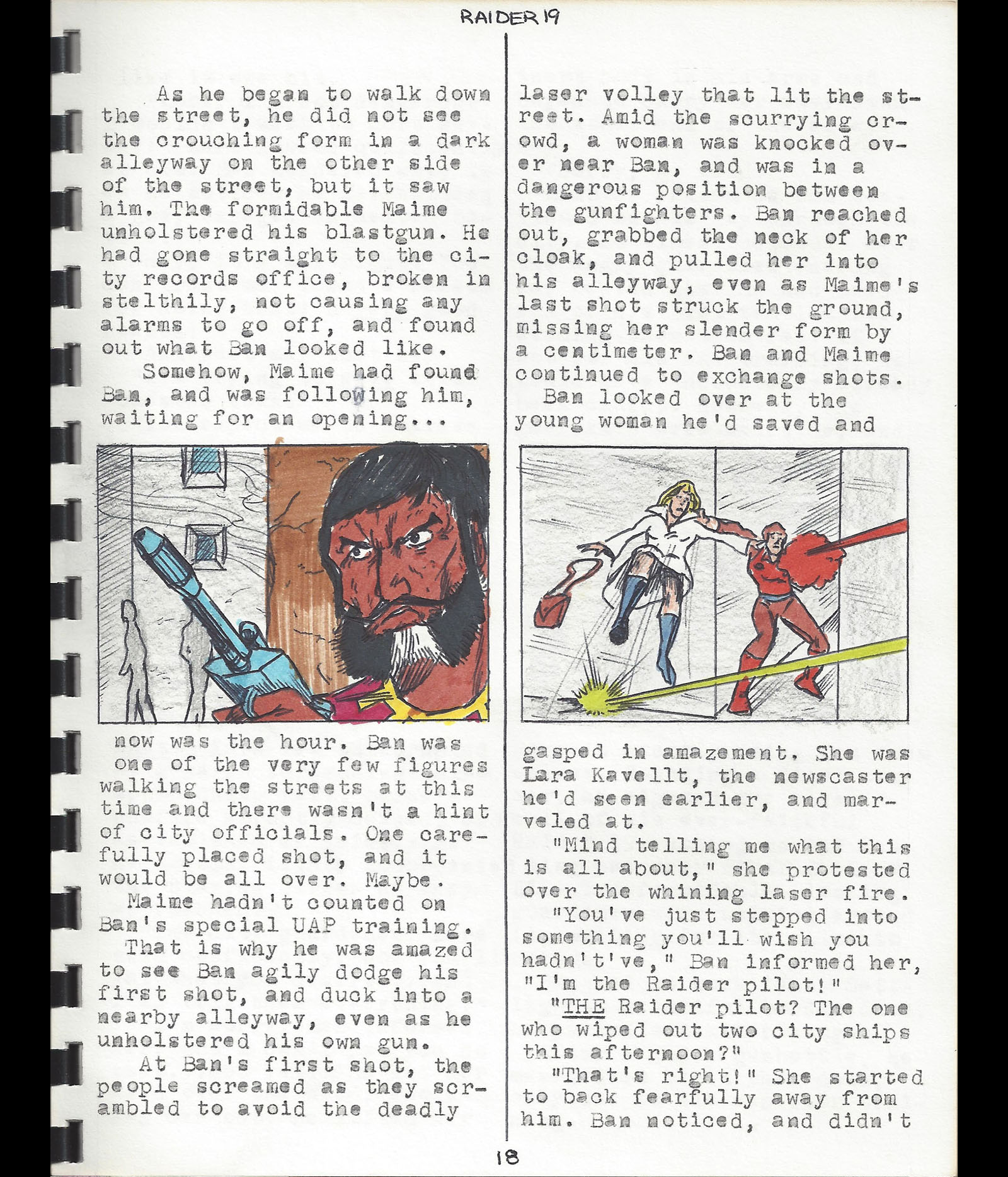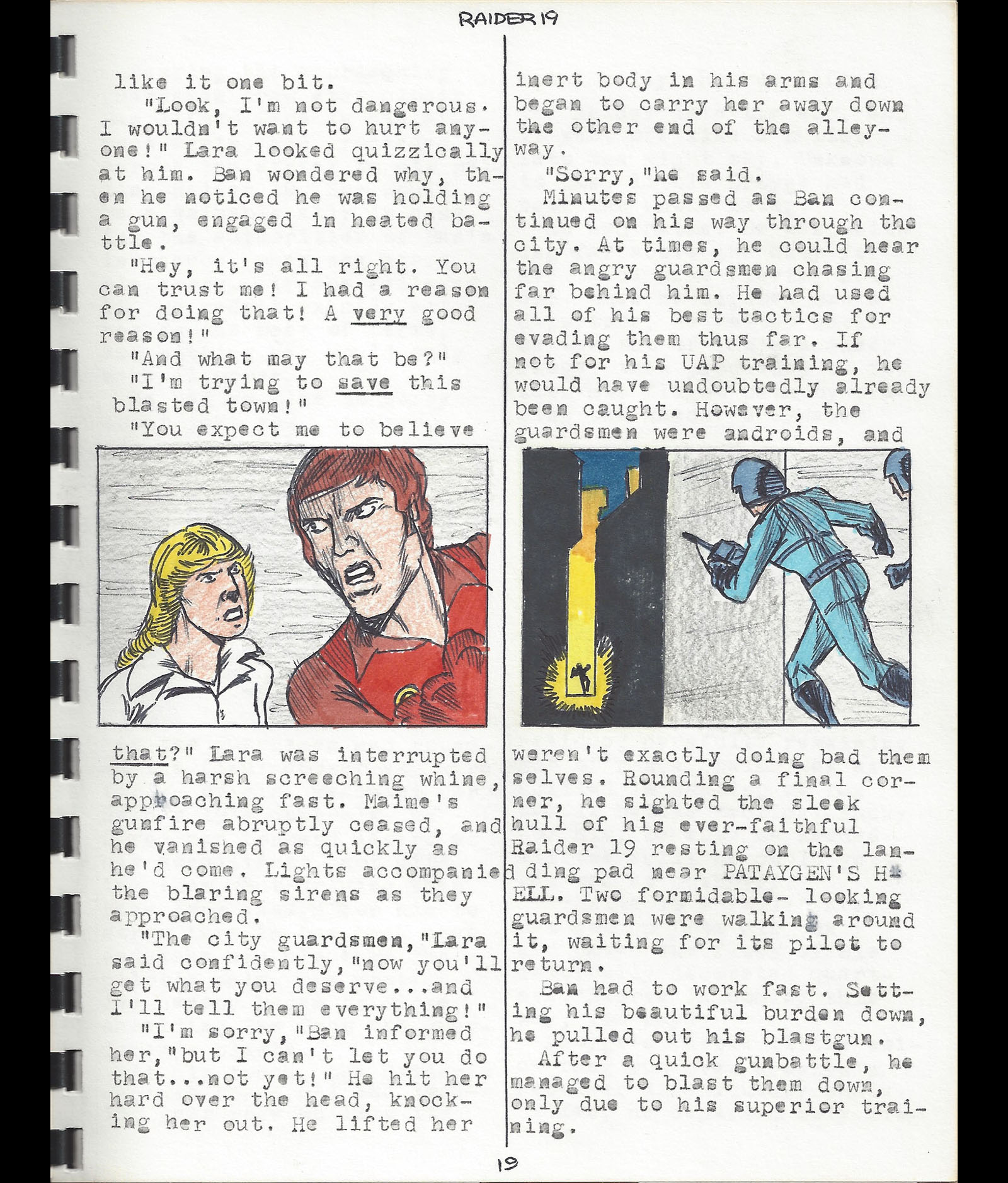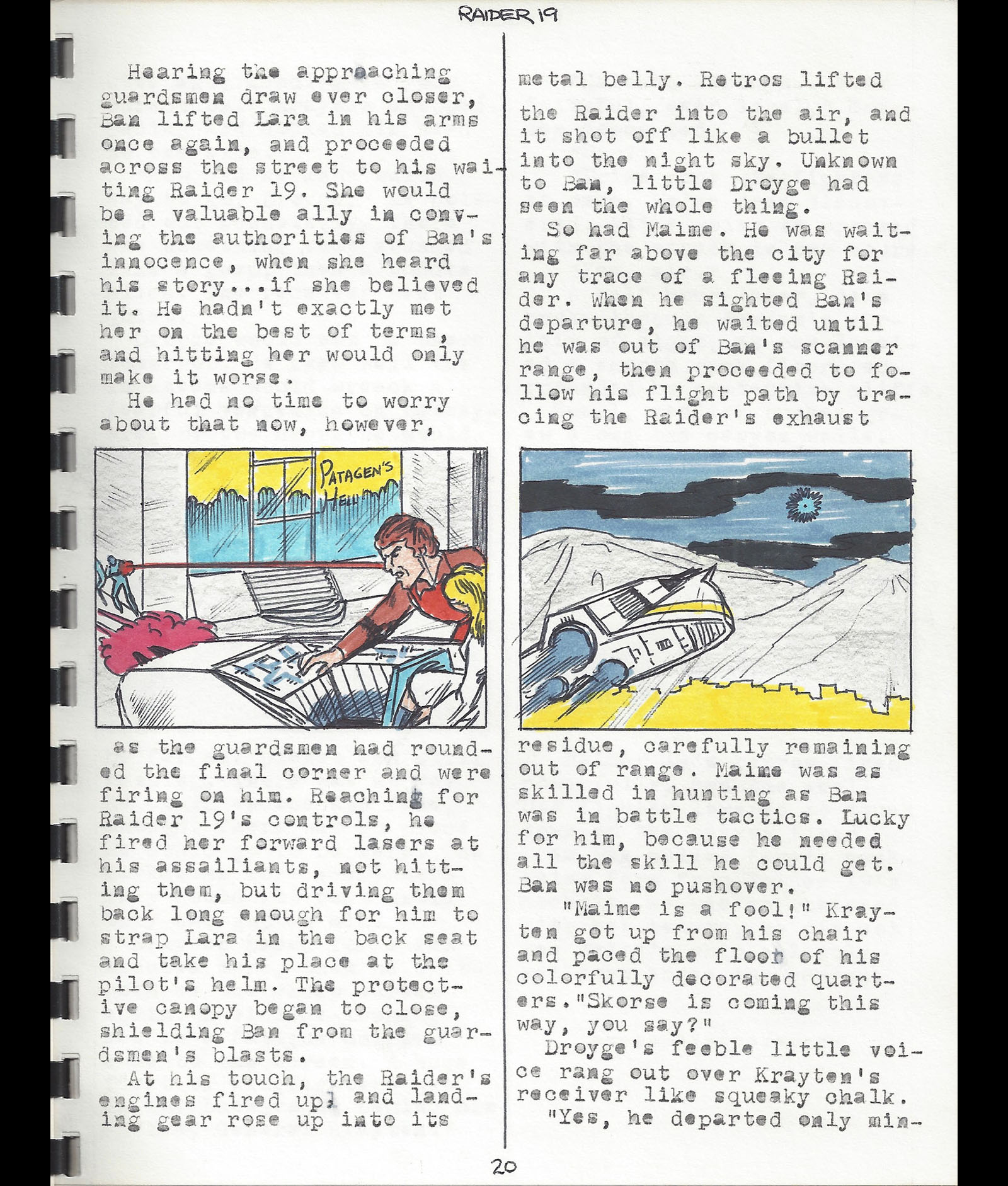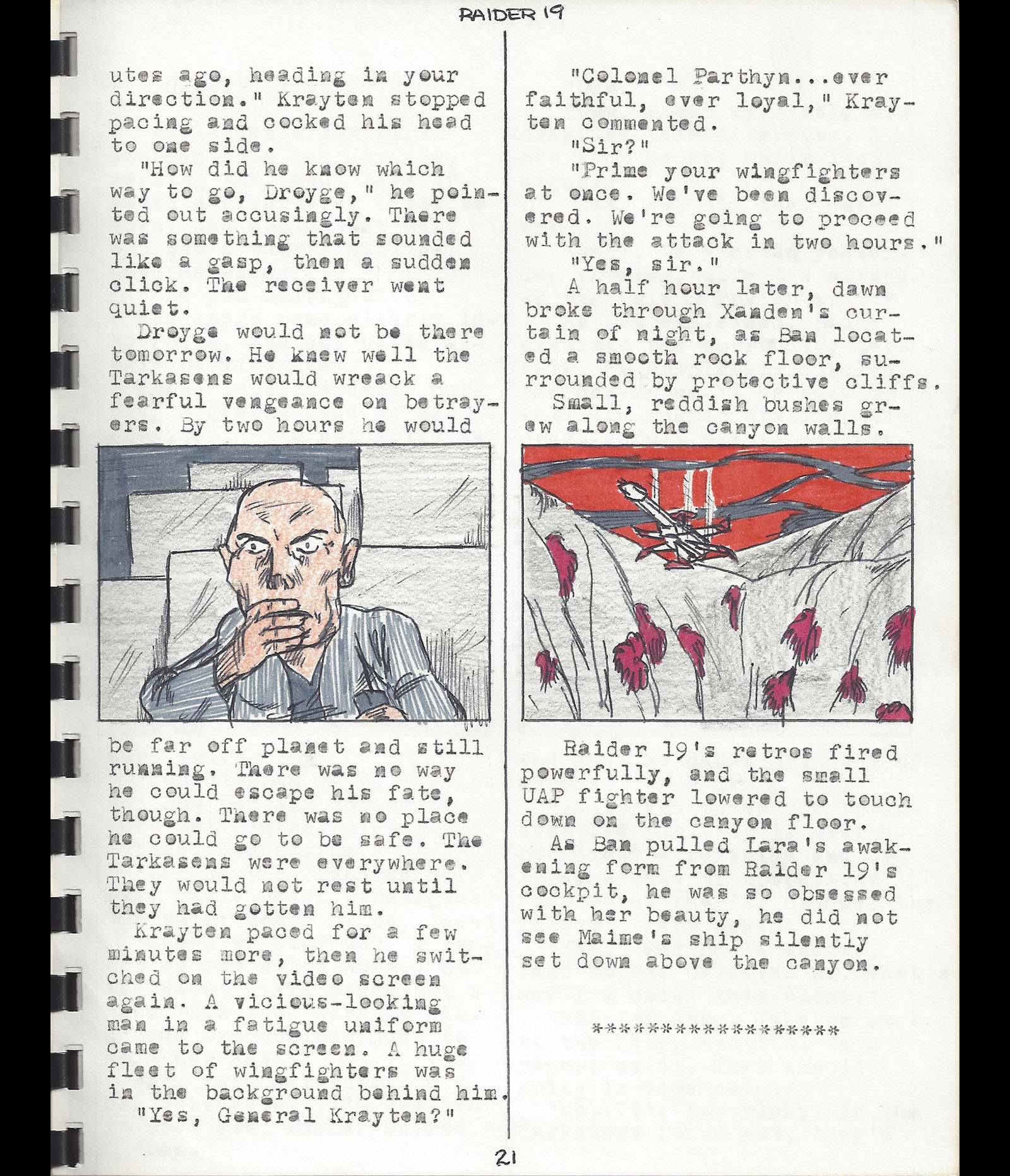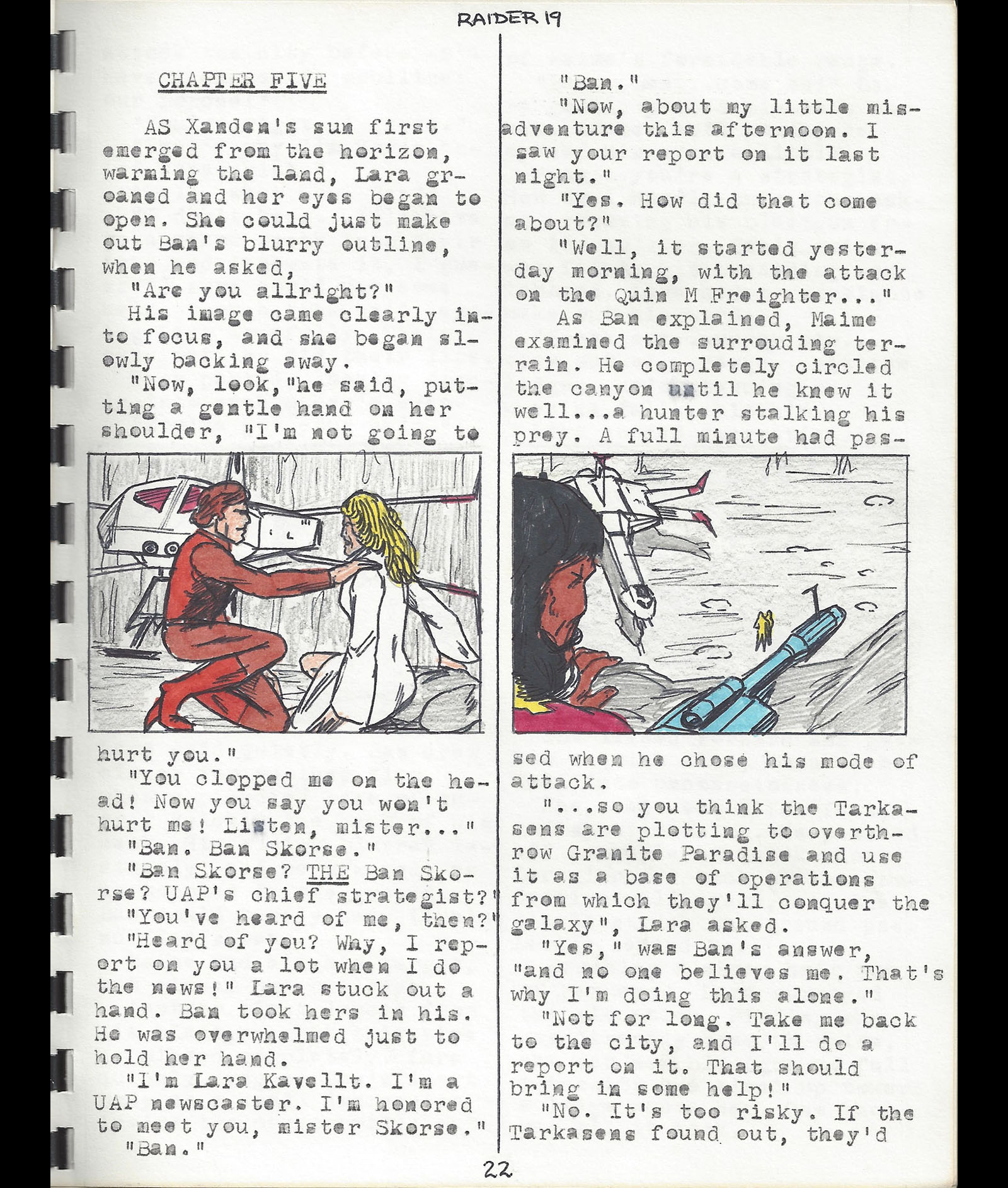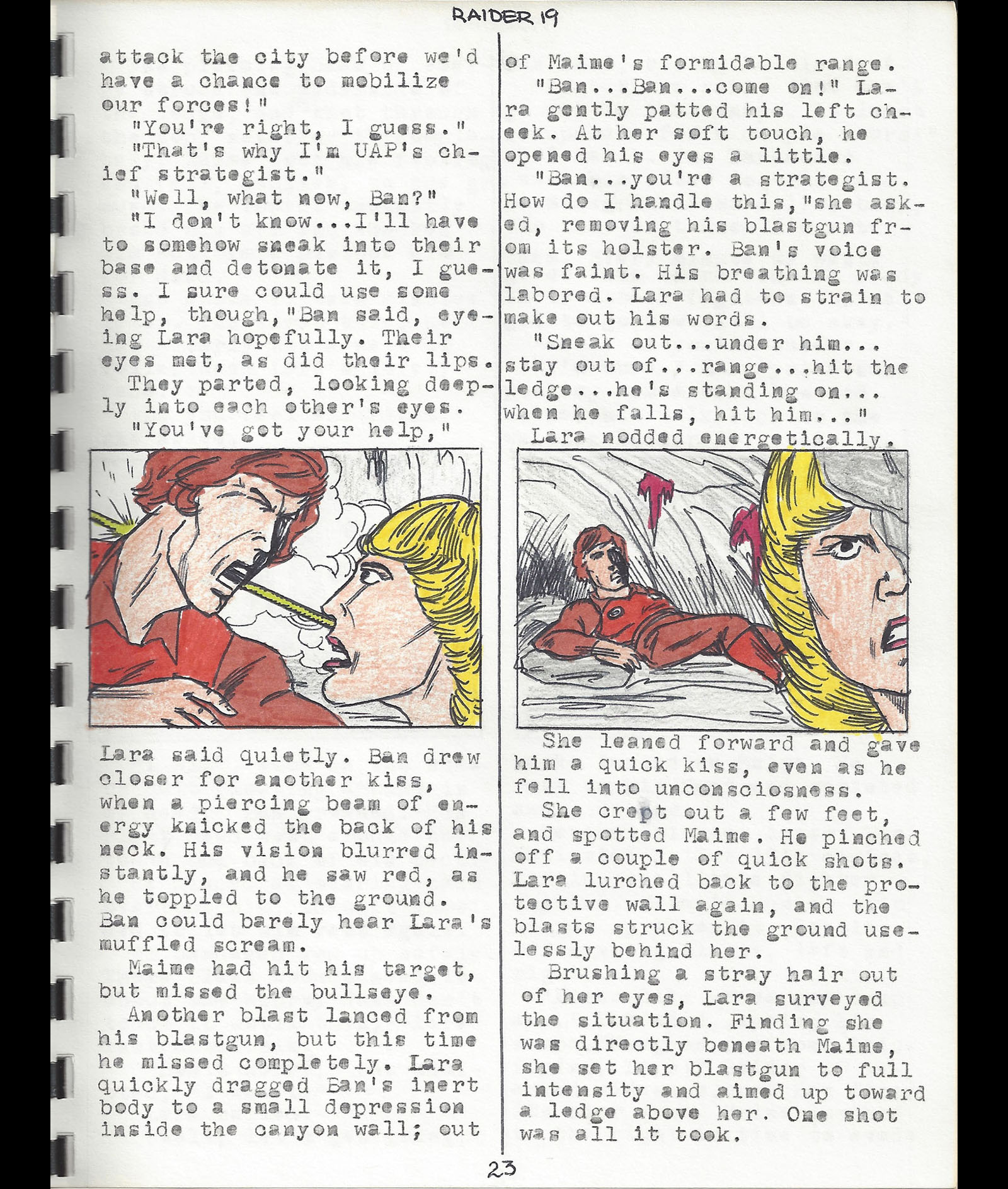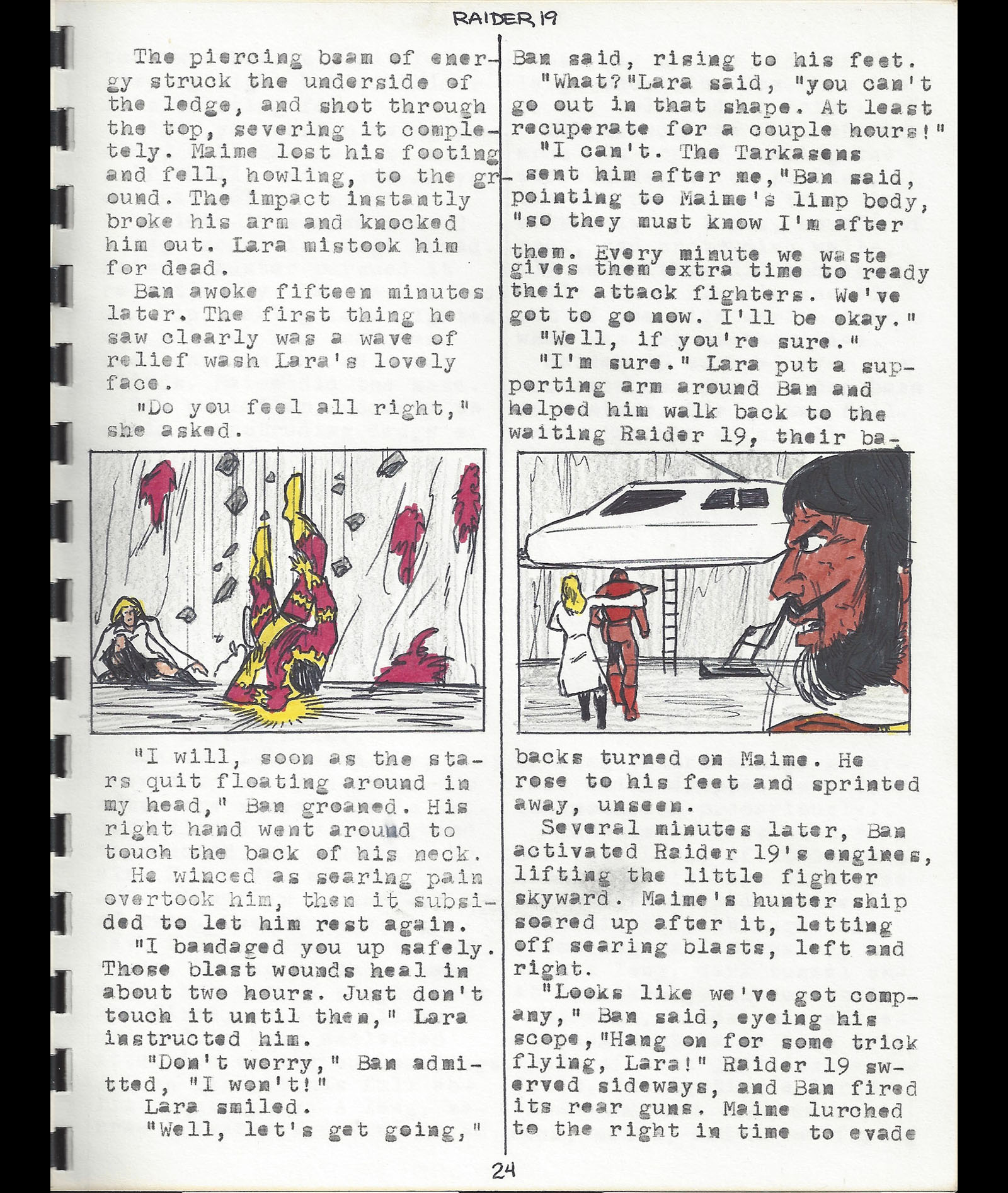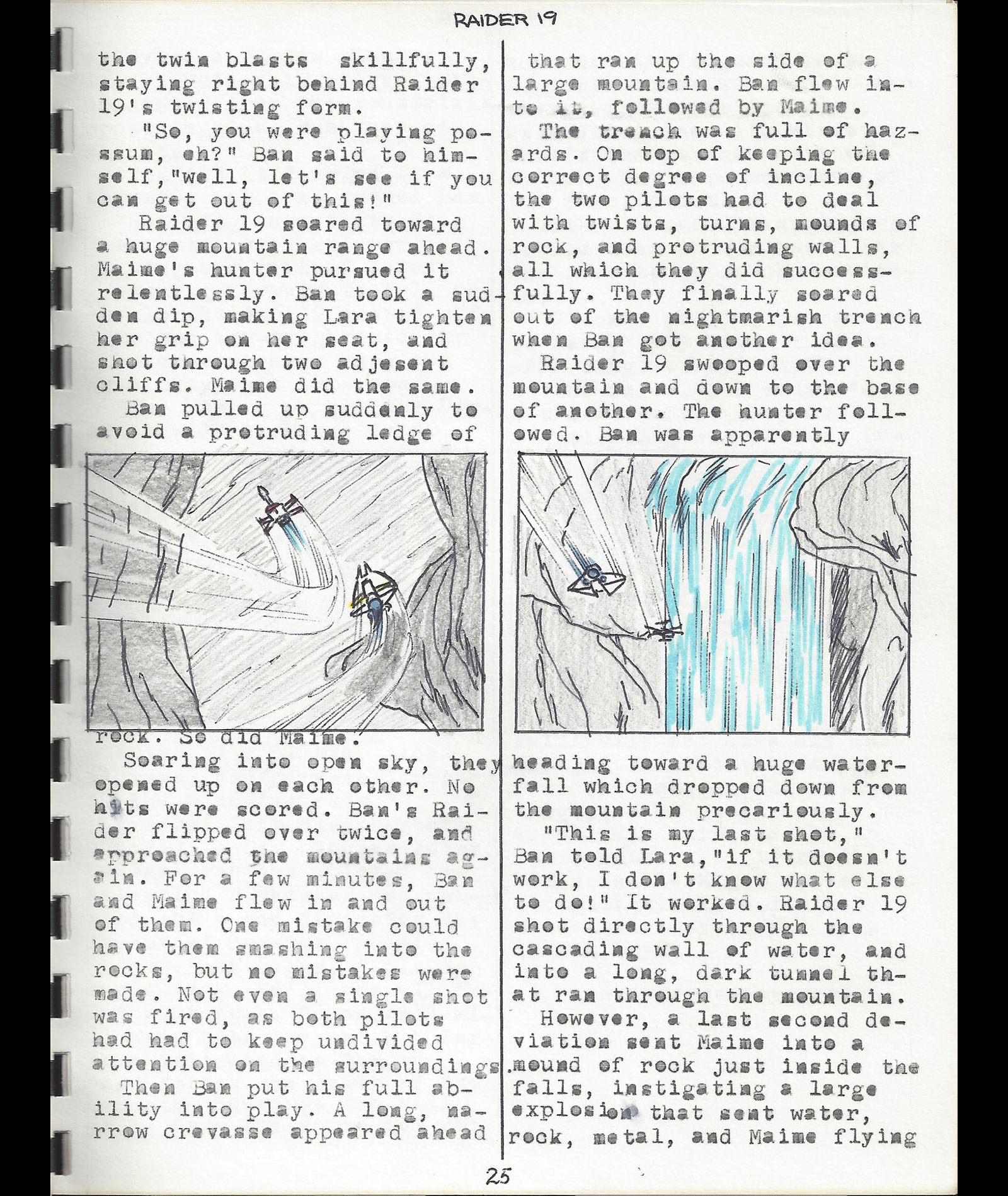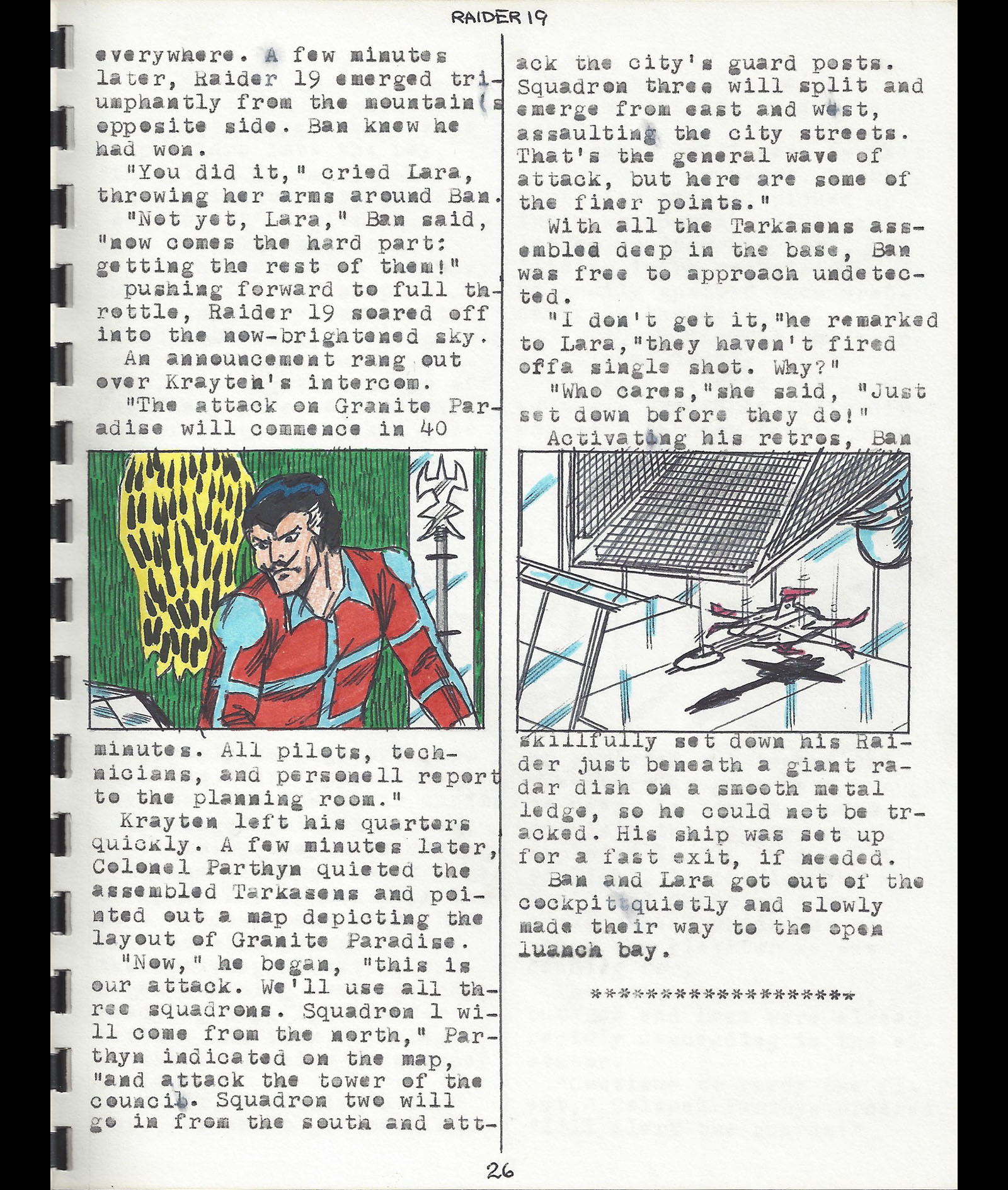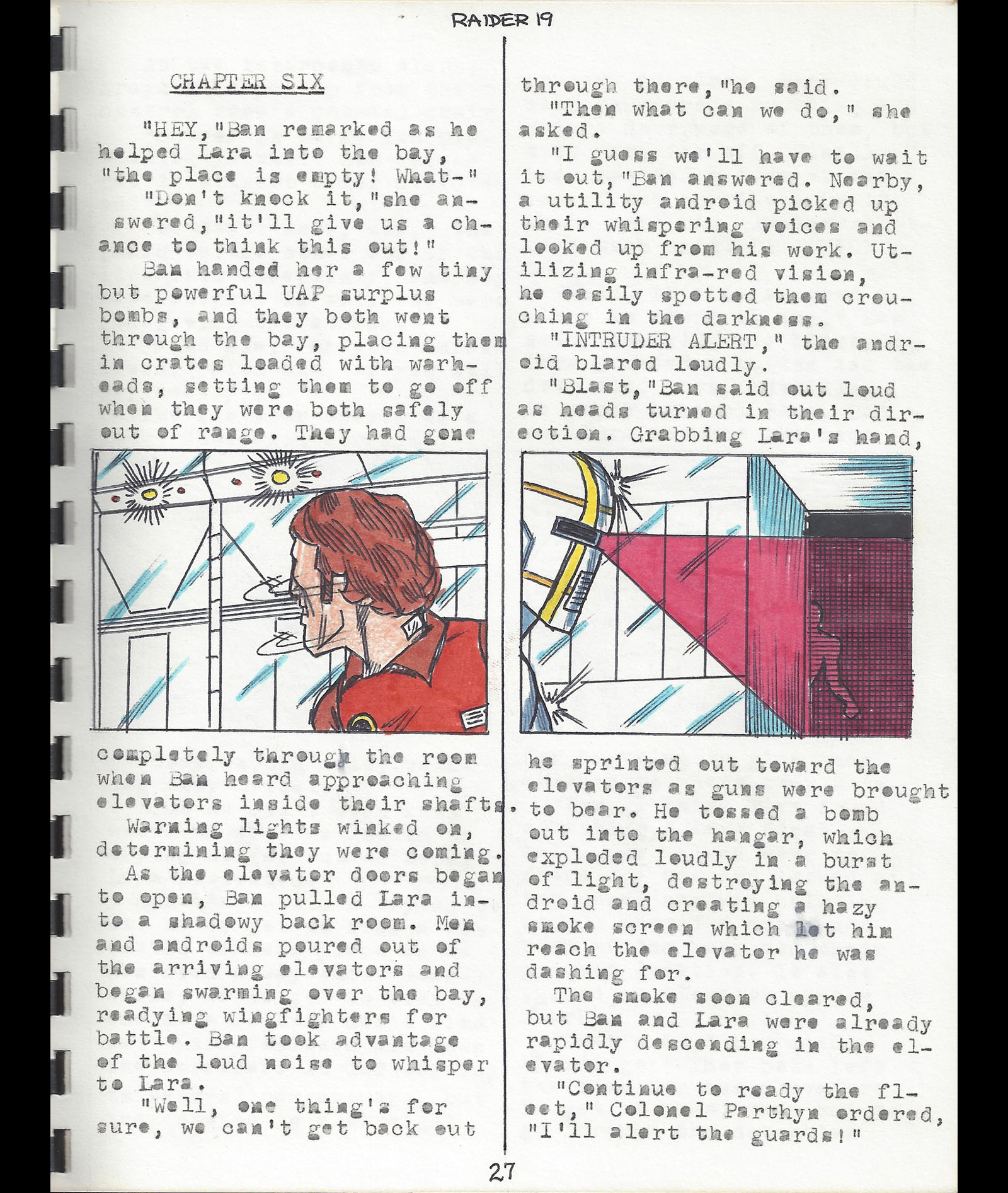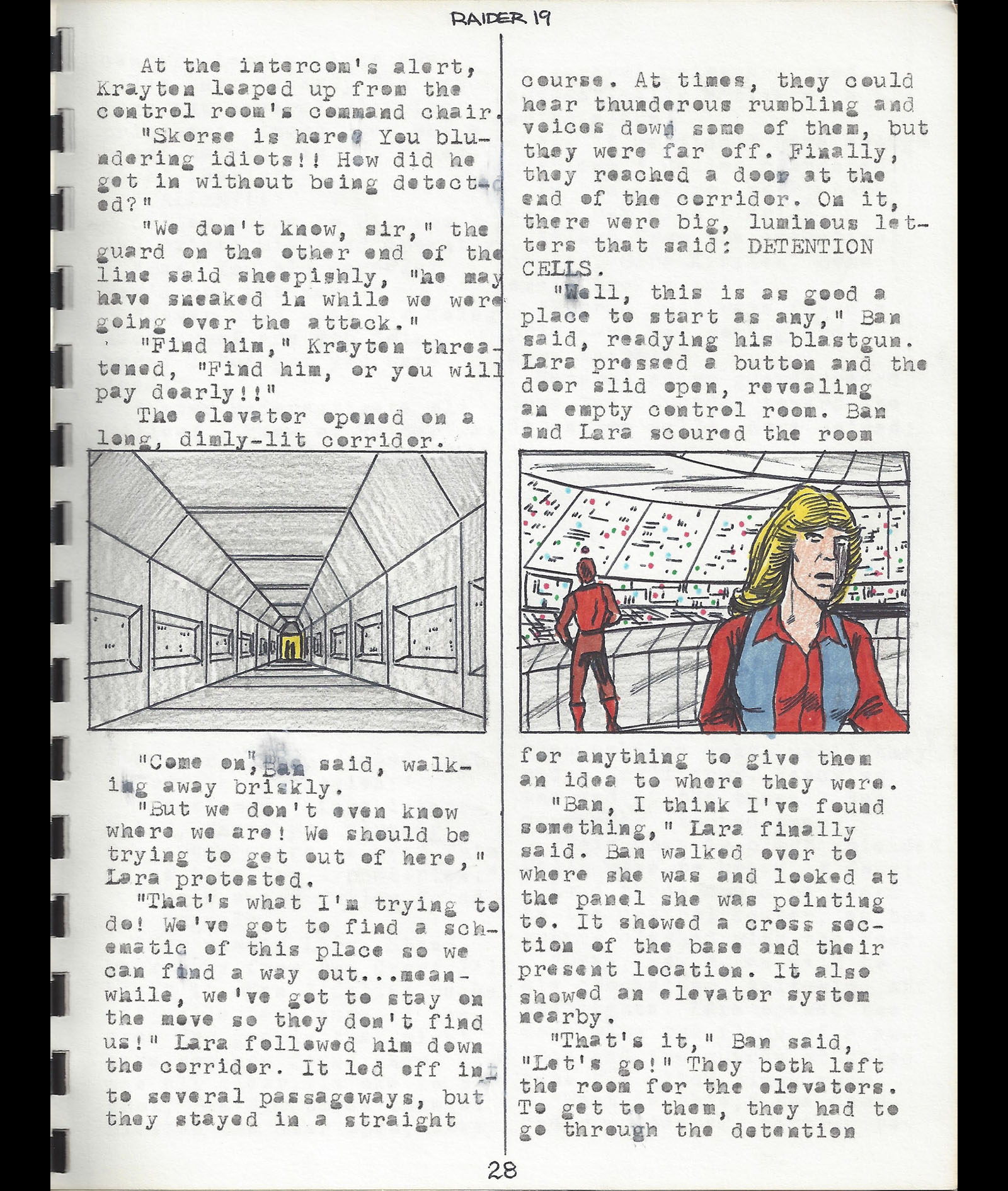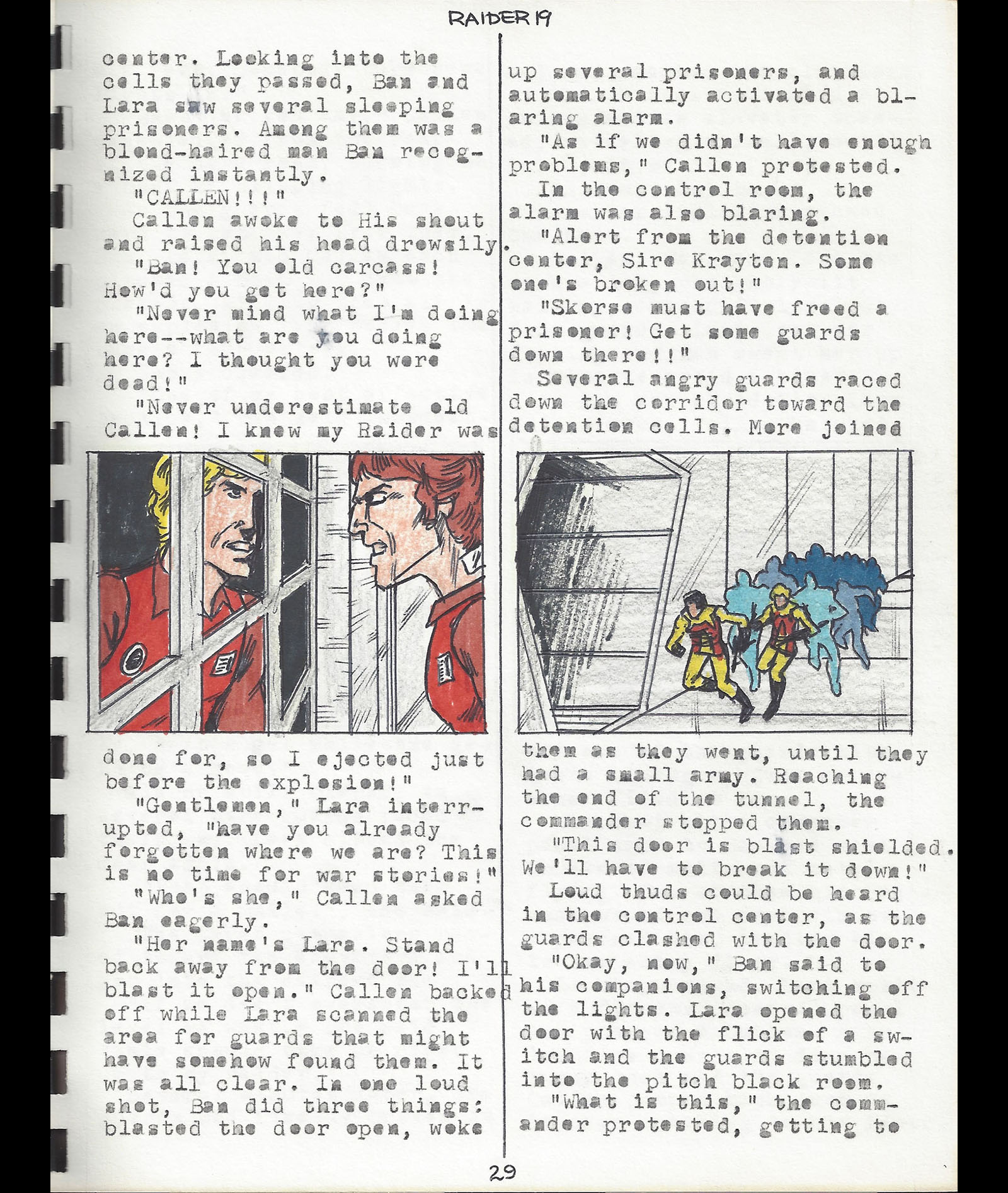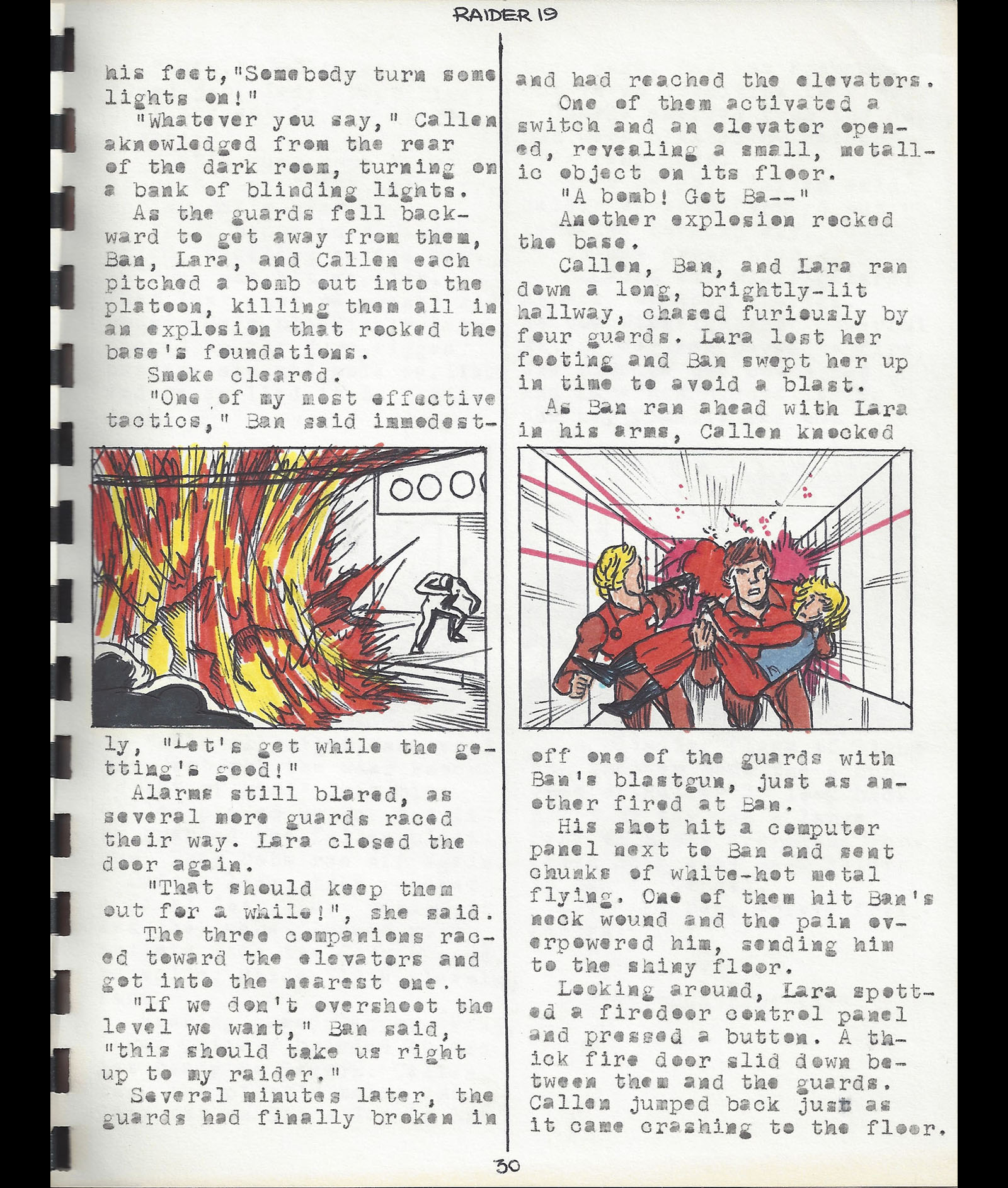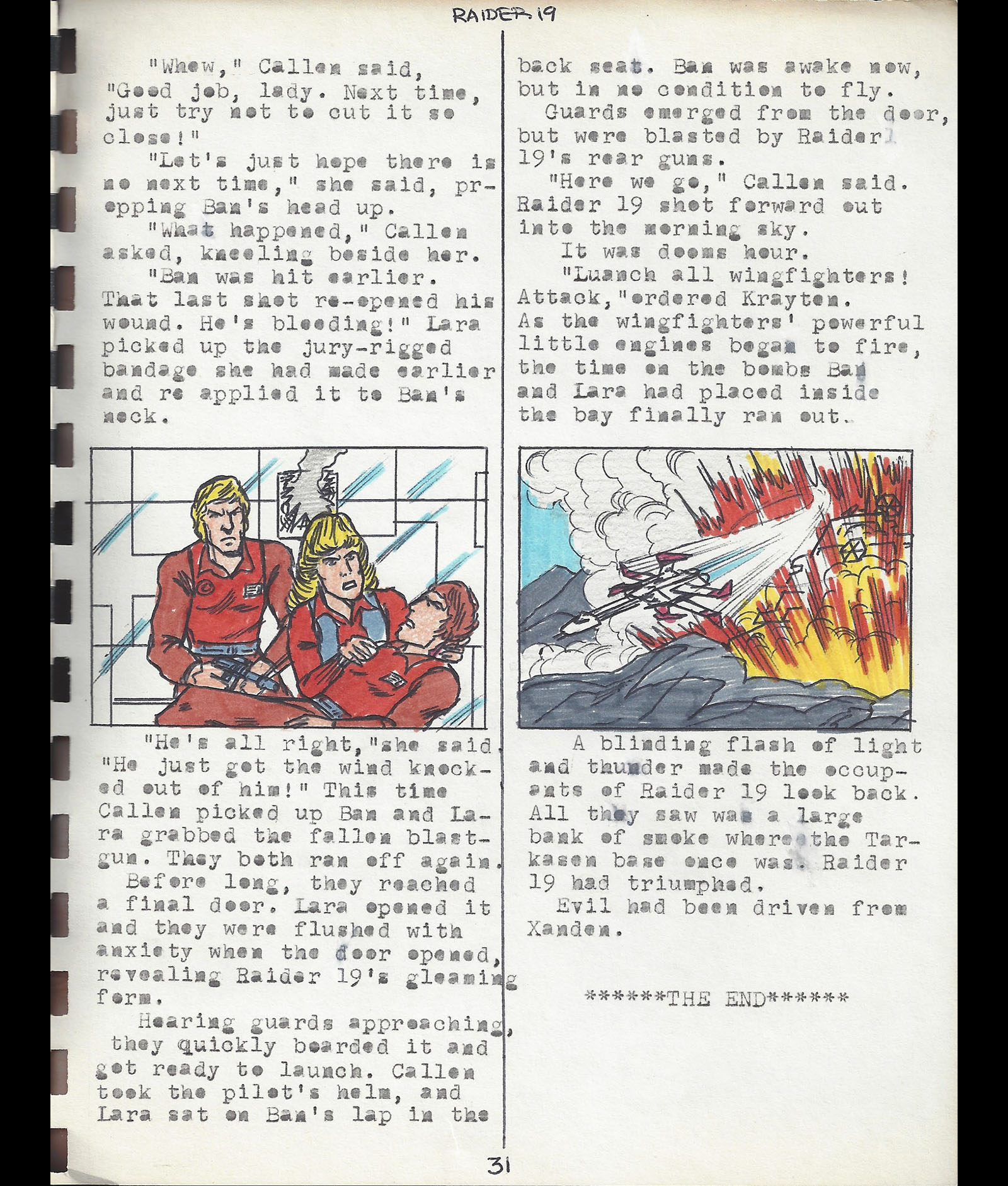Raider 19, 1980
In March 1979, I saw my first issue of Heavy Metal. The writing was completely opaque to me. (And mostly still is when I pull that issue out and look at it again. Hm? Of course I still have it. Who do you think you’re talking to?) But the artwork was UH-MAY-ZING. I was still 13 at the time, and this was unlike anything Marvel had to offer.
Most of the artists were European with a very different set of ideas about what comics could achieve if they weren’t preoccupied with selling superhero stories to teenagers. They existed on another level entirely, unafraid to challenge a reader with poetry, misdirection, and surrealism. Heavy Metal was primarily an anthology at the time, so with some stories you got only a tiny bite of what was obviously a very big meal.
Their draftsmanship was far beyond my skill set, so I had no hope of emulating what I saw on those pages in terms of drawing. But something I could explore was the varying approaches to layout and formatting. Some of the material barely looked like comics as I had come to understand them. These artists had moved way past what I was used to and found whole new ways to combine words with pictures. To put it briefly, it demonstrated to me that there was a box. And other people were thinking outside of it.
I didn’t get another issue of Heavy Metal for a long, long time (it wasn’t easy to find, and in another couple years Marvel would offer its own version titled Epic Illustrated, so I jumped on that instead) but the point was made. I had “permission” to experiment with formats and try new things. One result was this project right here.
It’s neither a comic nor a novel, but it’s prose with comic-style illustrations, so I guess it could be called a novella. Limited resources always directed my creative choices back then. Mainly the kind of paper I could get my hands on, either through school or other means. At some point, a batch of 8.5″ x 6.5″ paper came into my possession along with the means to get it coil-bound, I think because a neighbor had a small print shop in his house with some binding equipment. The limit with that kind of binding was 32 sheets of paper, so I set out to make a 32-page book.
I decided to make it a text presentation with color illustrations on every page. I didn’t write out a plot for it. That kind of planning was still in my future. I just sat down and started committing it to paper from page 1 with no backsies. To make it look all slick and professional, my cutting-edge tool was…a typewriter. And not a very good one, as you’ll see. But it was the best thing I had at my disposal.
The story of Raider 19 is sort of a sci-fi Lone Ranger with a dash of The Fugitive (though I wasn’t a viewer of either). A single fighter pilot survives a surprise enemy attack that blows up his ship. When myopic authorities refuse to respond to this obvious threat, he decides go it alone. He slinks through the underworld, finds a Lois Lane to help him, tangles with a hit man, and goes directly at the enemy to foil their evil, galaxy-threatening scheme. Dress it up with a shooting script and it could easily have been one of the many third-tier SF movies of the 80s.
It wasn’t great art by any means, but it was an experiment that worked as well as it could in my 14-year-old hands. I continued to draw “regular” comics, but the lure to step outside the box resulted in a few other experiments like this one. The most recent was my multimedia SF webcomic PITSBERG. It’s not a stretch to say that Raider 19 was the first step down that long, fascinating road.

